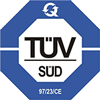-
Scambiatori a fascio tubiero
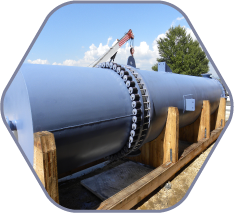
-
Scambiatori a blocchi
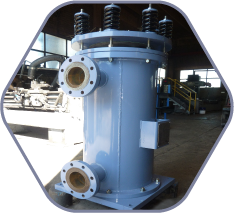
-
Colonne
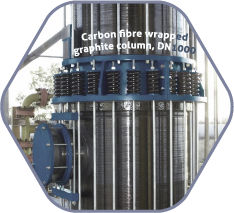
-
Quenchers
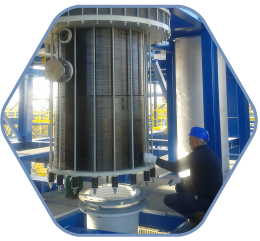
-
Dischi di rottura e ricambi

-
Colonne e vessel in acciaio / PTFE
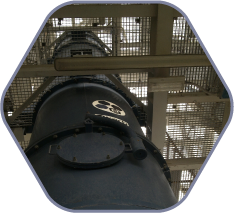
-
Coating in PVDF, ECTFE, ETFE e PFA
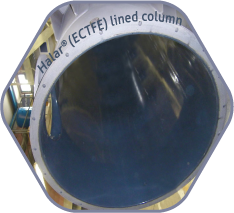
-
Gomma ed abanite
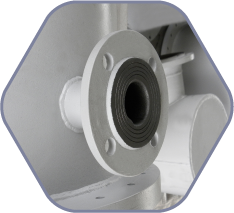
-
Apparecchi in PP, PVC e PVFD

-
Piping in acciaio rivestito in PTFE
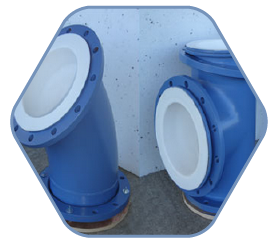
- Liquid distributors, downcomers, conveyors and support grids.
- Sieved plates, bubble cap, tunnel tray and chimneys plates.
- Random packing: Raschig rings (from 1/2 "to 2").
- PQ, pipe quench, with cooling ring for high temperature and saturation section
- MPQ mono-pipe quencher
- VQ quencher with variable section (venturi quencher)
- Rupture disks, PED certified, calibrated with high precision (+/- 5%), mono-block model (MB), three pieces model, with menbrane and reusable holder (3B), for high temperature application (eMB, whose calibration pressure does not vary from -60 to 280 ° C).
- Thermometric pockets, piping, fittings, and valves made of graphite.
- Special components and process items: bayonet heat exchangers, seals, ejectors, etc.
- PVDF, Polyvinylidene fluoride, maximum operating temperature: 120°C.
- ECTFE, Ethylene / Monoclorotrifluoroetilene, maximum operating temperature: 150°C.
- ETFE, Copolymer Ethylene / Tetrafluoroethylene, maximum operating temperature: 150°C.
- PFA, Perfluoroalcoxy, maximum operating temperature up to 260°C.
- Excellent resistance to corrosion (Ecarb assist the choice of suitable coating, depending on the process media).
- Seamless coatings, which allow a limited number of flanged joint and they are applicable on complicated geometries.
- Rubber, max working temperature 85°C, abrasion resistant.
- Ebonite, max working temperature 95°C.
- Graphite charged Ebonite, max working temperature 105°C.
- Phenolic-based lining, max working temperature 120°C.
- Good corrosion resistance (Ecarb will advise the best solution, depending on the process);
- Not expensive and well established technology;
- Easy repair on field is possible.
- Vessels, columns and reactors made of plastic materials ( PP, PVC or FRP ).
- Carbon steel vessels, columns and reactors lined with PP or PE.
- Vessels, Columns and reactors made of FRP (in particular: PP, PVDF, MFA, ECTFE, FEP, PFA or PTFE).
- Carbon steel and cast iron – stainless steel
- Chromium-molybdenum steel – austenitic steel
- Nickel and Nickel Alloy
- Duplex and Super Duplex steel
- Titanium, tantalum and niobium
- Copper and copper alloys, marine alloys
- Carbon steel and cast iron – stainless steel
- Chromium-molybdenum steel – austenitic steel
- Nickel and Nickel Alloy
- Duplex and Super Duplex
- Titanium, tantalum and niobium
- Copper and copper alloys, marine alloys.
- Stainless Steel (AISI 304 or 316)
- Titanium, Nickel and Nickel Alloy
- Shell: diameter up to 350 mm, made of c. s., stainless steel, glass-lined steel, PTFE-lined steel, etc.
- SIC Tubes: from Ø 14 mm to Ø 35 mm, with max length 4500 mm (max heat transfer area: 40 m2)
- Working temperature range: -30/+240 °C, working pressure range: -1 bar / + 8 bar
- Certifications: CE, ATEX and FDA
- Superior corrosion resistance;
- Homogeneous bursting behavior: graphite membrane breaks and the entire section becomes available for gas discharge;
- Thermal stability: graphite rupture disks behavior is not strongly affected by temperature.
- Graphec® MB: standard graphite monolithic disk for standard applications, simple and reliable design.
- Graphec® eMB: monolithic graphite disk for high temperature, with PTFE or expanded graphite membrane (with stable bursting pressure up to 260°C).
- Graphec® 3B: disks made of three graphite components, a graphite membrane and reusable holder, in two parts.
- No rotating components(e.g. Pumps), in order to reduce energy consumption;
- Easy and safe maintenance: key-components are around the burner, that located in confortable and accessible area, at the bottom of the unit.
- It is possible to produce up to 40% acid concentration, with high yield and efficiency (it works with minimum Clorine excess).
- It can be equiped with heat recovery system, in order to produce LP steam.
- Many arrangements and sizes are available, with max capacity 150 TPD (as 100% HCl)
- Safety accessories are all certified and redundant (flame guard, hydraulic guards, bursting disks).
- Our packages are adjustable for any operating demand, with independent, hybrid or centralized control system.
- extremely precise dilution within a large range of concentration (up to 85% w/w);
- strict control of all critical process parameters;
- safe and fast start-up and shut-down procedures;
- optimum material choice for each component, in order to maximize lifetime.
- Superior thermal stability in a large temperature range (Graphec® is not thermoplastic material and it does not deform during its lifetime);
- Complicated geometry with cemented joints;
- High wetability due to low surface tension and higher roughness of graphite;
- Lower price compared with PTFE or metallic internals.
- Distributor plates: massive graphite plates with crowns or graphite sieved pipes for proper distribution of liquid or gas along the packing section;
- Tunnel cap, sieved and bubble cap trays with downcomers and weirs, eventually assembled in a complete frame, with tie rods and gaskets;
- Dip pipe, chimney plates, support grids, re-distributors and support plates;
- Packing: graphite Raschig rings.
-
PP, PVC e PVFD process equipment

-
Pressure vessels made of noble metals
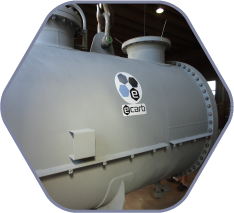
-
PTFE lined equipment

-
Glass lined vessels
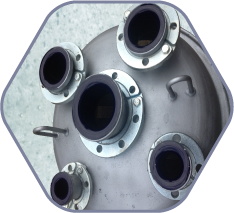
-
Rubber and ebonite

- Liquid distributors, downcomers, conveyors and support grids.
- Sieved plates, bubble cap, tunnel tray and chimneys plates.
- Random packing: Raschig rings (from 1/2 "to 2").
- PQ, pipe quench, with cooling ring for high temperature and saturation section
- MPQ mono-pipe quencher
- VQ quencher with variable section (venturi quencher)
- Rupture disks, PED certified, calibrated with high precision (+/- 5%), mono-block model (MB), three pieces model, with menbrane and reusable holder (3B), for high temperature application (eMB, whose calibration pressure does not vary from -60 to 280 ° C).
- Thermometric pockets, piping, fittings, and valves made of graphite.
- Special components and process items: bayonet heat exchangers, seals, ejectors, etc.
- PVDF, Polyvinylidene fluoride, maximum operating temperature: 120°C.
- ECTFE, Ethylene / Monoclorotrifluoroetilene, maximum operating temperature: 150°C.
- ETFE, Copolymer Ethylene / Tetrafluoroethylene, maximum operating temperature: 150°C.
- PFA, Perfluoroalcoxy, maximum operating temperature up to 260°C.
- Excellent resistance to corrosion (Ecarb assist the choice of suitable coating, depending on the process media).
- Seamless coatings, which allow a limited number of flanged joint and they are applicable on complicated geometries.
- Rubber, max working temperature 85°C, abrasion resistant.
- Ebonite, max working temperature 95°C.
- Graphite charged Ebonite, max working temperature 105°C.
- Phenolic-based lining, max working temperature 120°C.
- Good corrosion resistance (Ecarb will advise the best solution, depending on the process);
- Not expensive and well established technology;
- Easy repair on field is possible.
- Vessels, columns and reactors made of plastic materials ( PP, PVC or FRP ).
- Carbon steel vessels, columns and reactors lined with PP or PE.
- Vessels, Columns and reactors made of FRP (in particular: PP, PVDF, MFA, ECTFE, FEP, PFA or PTFE).
- Carbon steel and cast iron – stainless steel
- Chromium-molybdenum steel – austenitic steel
- Nickel and Nickel Alloy
- Duplex and Super Duplex steel
- Titanium, tantalum and niobium
- Copper and copper alloys, marine alloys
- Carbon steel and cast iron – stainless steel
- Chromium-molybdenum steel – austenitic steel
- Nickel and Nickel Alloy
- Duplex and Super Duplex
- Titanium, tantalum and niobium
- Copper and copper alloys, marine alloys.
- Stainless Steel (AISI 304 or 316)
- Titanium, Nickel and Nickel Alloy
- Shell: diameter up to 350 mm, made of c. s., stainless steel, glass-lined steel, PTFE-lined steel, etc.
- SIC Tubes: from Ø 14 mm to Ø 35 mm, with max length 4500 mm (max heat transfer area: 40 m2)
- Working temperature range: -30/+240 °C, working pressure range: -1 bar / + 8 bar
- Certifications: CE, ATEX and FDA
- Superior corrosion resistance;
- Homogeneous bursting behavior: graphite membrane breaks and the entire section becomes available for gas discharge;
- Thermal stability: graphite rupture disks behavior is not strongly affected by temperature.
- Graphec® MB: standard graphite monolithic disk for standard applications, simple and reliable design.
- Graphec® eMB: monolithic graphite disk for high temperature, with PTFE or expanded graphite membrane (with stable bursting pressure up to 260°C).
- Graphec® 3B: disks made of three graphite components, a graphite membrane and reusable holder, in two parts.
- No rotating components(e.g. Pumps), in order to reduce energy consumption;
- Easy and safe maintenance: key-components are around the burner, that located in confortable and accessible area, at the bottom of the unit.
- It is possible to produce up to 40% acid concentration, with high yield and efficiency (it works with minimum Clorine excess).
- It can be equiped with heat recovery system, in order to produce LP steam.
- Many arrangements and sizes are available, with max capacity 150 TPD (as 100% HCl)
- Safety accessories are all certified and redundant (flame guard, hydraulic guards, bursting disks).
- Our packages are adjustable for any operating demand, with independent, hybrid or centralized control system.
- extremely precise dilution within a large range of concentration (up to 85% w/w);
- strict control of all critical process parameters;
- safe and fast start-up and shut-down procedures;
- optimum material choice for each component, in order to maximize lifetime.
- Superior thermal stability in a large temperature range (Graphec® is not thermoplastic material and it does not deform during its lifetime);
- Complicated geometry with cemented joints;
- High wetability due to low surface tension and higher roughness of graphite;
- Lower price compared with PTFE or metallic internals.
- Distributor plates: massive graphite plates with crowns or graphite sieved pipes for proper distribution of liquid or gas along the packing section;
- Tunnel cap, sieved and bubble cap trays with downcomers and weirs, eventually assembled in a complete frame, with tie rods and gaskets;
- Dip pipe, chimney plates, support grids, re-distributors and support plates;
- Packing: graphite Raschig rings.
-
“OneButton” HCl Synthesis Unit
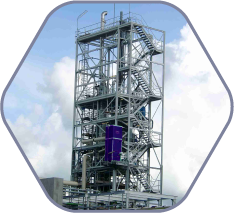
-
HCl distillation plant
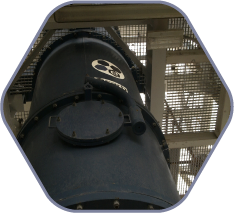
-
HCl purification and stripping
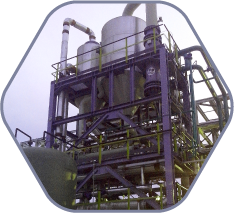
-
HCl absorption units
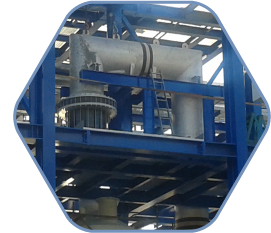
-
Scrubber HCl
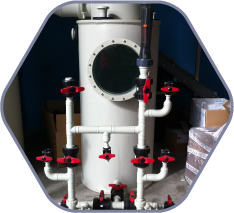
-
High purity ferric chloride solution
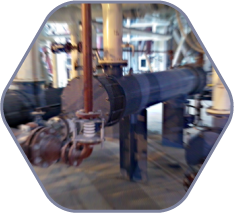
-
Ferric chlorides from pickling solution
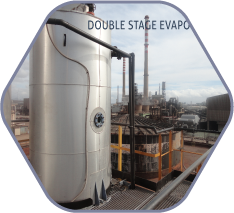
-
PAC, Poly - Aluminium Chloride
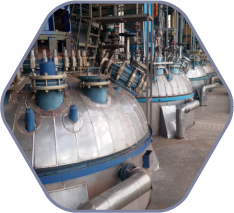
-
Sulfuric acid dilution systems
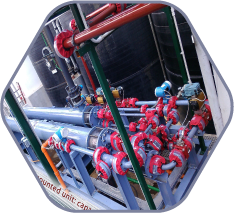
-
Sulfuric Acid concentration

-
Fumes quenching & absorption

-
HCl Scrubbers

- Liquid distributors, downcomers, conveyors and support grids.
- Sieved plates, bubble cap, tunnel tray and chimneys plates.
- Random packing: Raschig rings (from 1/2 "to 2").
- PQ, pipe quench, with cooling ring for high temperature and saturation section
- MPQ mono-pipe quencher
- VQ quencher with variable section (venturi quencher)
- Rupture disks, PED certified, calibrated with high precision (+/- 5%), mono-block model (MB), three pieces model, with menbrane and reusable holder (3B), for high temperature application (eMB, whose calibration pressure does not vary from -60 to 280 ° C).
- Thermometric pockets, piping, fittings, and valves made of graphite.
- Special components and process items: bayonet heat exchangers, seals, ejectors, etc.
- PVDF, Polyvinylidene fluoride, maximum operating temperature: 120°C.
- ECTFE, Ethylene / Monoclorotrifluoroetilene, maximum operating temperature: 150°C.
- ETFE, Copolymer Ethylene / Tetrafluoroethylene, maximum operating temperature: 150°C.
- PFA, Perfluoroalcoxy, maximum operating temperature up to 260°C.
- Excellent resistance to corrosion (Ecarb assist the choice of suitable coating, depending on the process media).
- Seamless coatings, which allow a limited number of flanged joint and they are applicable on complicated geometries.
- Rubber, max working temperature 85°C, abrasion resistant.
- Ebonite, max working temperature 95°C.
- Graphite charged Ebonite, max working temperature 105°C.
- Phenolic-based lining, max working temperature 120°C.
- Good corrosion resistance (Ecarb will advise the best solution, depending on the process);
- Not expensive and well established technology;
- Easy repair on field is possible.
- Vessels, columns and reactors made of plastic materials ( PP, PVC or FRP ).
- Carbon steel vessels, columns and reactors lined with PP or PE.
- Vessels, Columns and reactors made of FRP (in particular: PP, PVDF, MFA, ECTFE, FEP, PFA or PTFE).
- Carbon steel and cast iron – stainless steel
- Chromium-molybdenum steel – austenitic steel
- Nickel and Nickel Alloy
- Duplex and Super Duplex steel
- Titanium, tantalum and niobium
- Copper and copper alloys, marine alloys
- Carbon steel and cast iron – stainless steel
- Chromium-molybdenum steel – austenitic steel
- Nickel and Nickel Alloy
- Duplex and Super Duplex
- Titanium, tantalum and niobium
- Copper and copper alloys, marine alloys.
- Stainless Steel (AISI 304 or 316)
- Titanium, Nickel and Nickel Alloy
- Shell: diameter up to 350 mm, made of c. s., stainless steel, glass-lined steel, PTFE-lined steel, etc.
- SIC Tubes: from Ø 14 mm to Ø 35 mm, with max length 4500 mm (max heat transfer area: 40 m2)
- Working temperature range: -30/+240 °C, working pressure range: -1 bar / + 8 bar
- Certifications: CE, ATEX and FDA
- Superior corrosion resistance;
- Homogeneous bursting behavior: graphite membrane breaks and the entire section becomes available for gas discharge;
- Thermal stability: graphite rupture disks behavior is not strongly affected by temperature.
- Graphec® MB: standard graphite monolithic disk for standard applications, simple and reliable design.
- Graphec® eMB: monolithic graphite disk for high temperature, with PTFE or expanded graphite membrane (with stable bursting pressure up to 260°C).
- Graphec® 3B: disks made of three graphite components, a graphite membrane and reusable holder, in two parts.
- No rotating components(e.g. Pumps), in order to reduce energy consumption;
- Easy and safe maintenance: key-components are around the burner, that located in confortable and accessible area, at the bottom of the unit.
- It is possible to produce up to 40% acid concentration, with high yield and efficiency (it works with minimum Clorine excess).
- It can be equiped with heat recovery system, in order to produce LP steam.
- Many arrangements and sizes are available, with max capacity 150 TPD (as 100% HCl)
- Safety accessories are all certified and redundant (flame guard, hydraulic guards, bursting disks).
- Our packages are adjustable for any operating demand, with independent, hybrid or centralized control system.
- extremely precise dilution within a large range of concentration (up to 85% w/w);
- strict control of all critical process parameters;
- safe and fast start-up and shut-down procedures;
- optimum material choice for each component, in order to maximize lifetime.
- Superior thermal stability in a large temperature range (Graphec® is not thermoplastic material and it does not deform during its lifetime);
- Complicated geometry with cemented joints;
- High wetability due to low surface tension and higher roughness of graphite;
- Lower price compared with PTFE or metallic internals.
- Distributor plates: massive graphite plates with crowns or graphite sieved pipes for proper distribution of liquid or gas along the packing section;
- Tunnel cap, sieved and bubble cap trays with downcomers and weirs, eventually assembled in a complete frame, with tie rods and gaskets;
- Dip pipe, chimney plates, support grids, re-distributors and support plates;
- Packing: graphite Raschig rings.
- Repair of graphite heat exchangers, pumps and columns, in our shop or on customer’s site.
- Modification or renewal of PED certifications.
- Maintenance training program, preventive maintenance plan, 24h and high availability service contract.
- Inspections and test. Analysis and diagnosis of your process. Commissioning and start up of our equipment and systems.
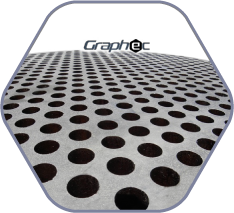
Grafite
Graphec® qualità assoluta
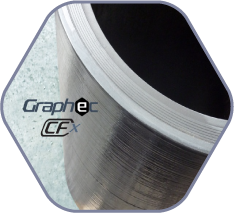
Graphec@, la grafite taylor made.
Ecarb realizza unità di processo in grafite, quali scambiatori, colonne, quencher, etc. Non essendo un produttore di grafite grezza, selezioniamo con sapienza i migliori materiali presso qualificati produttori occidentali*, in base ad un unico criterio: mettere a disposizione dei nostri clienti il grado ottimale per ogni specifico apparecchio. Un livello qualitativo d'eccellenza a cui corrisponde un prezzo competitivo, limitato al contenuto tecnologico del prodotto. Nessun extra-costo amministrativo, finanziario o commerciale. Competenza e tecnologia, niente altro.
*ECARB utilizza solo grafite omologata in accordo ad AD-2000 N2, prodotta in Europa o Usa. Non utilizziamo materiali di provenienza indiana o cinese.
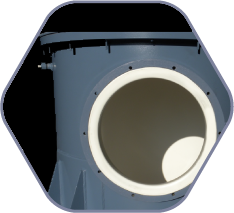
Plastica e rivestimenti
La protezione intelligente

Plastica e rivestimenti
Ecarb produce componenti, piping e apparecchi in acciaio rivestito (PTFE e altri fluoro-polimeri, gomma, ebanite, coating a base fenolica o epossidica). Materiali e tecniche di applicazione sono selezionati in base ai fluidi trattati e per rispondere alle condizioni di progetto, anche le più sfidanti, come alte temperature ed operazioni in vuoto assoluto. Semilavorati e materiali sono di qualità certificata, per fornire apparecchi sicuri ed affidabili. La progettazione di ogni unità è svolta secondo gli standard più diffusi e con piena consapevolezza dei requisiti specifici di ogni tecnica rivestimento.
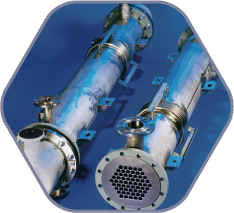
Metalli speciali
Caldareria d'eccellenza

Metalli speciali
Dalla più semplice unità di processo, agli item più sofisticati in metalli rari. La nostra gamma include: acciaio al Carbonio e INOX, Acciai speciali, Titanio, Tantalio, Zirconio, Nichel, Monel, Ni-alloys, etc. Ecarb si occupa dalle progettazione di processo e del dimensionamento meccanico, garantendo poi una produzione a regola d'arte, grazie a saldatori certificati, procedure consolidate e tecnologie di eccellenza.
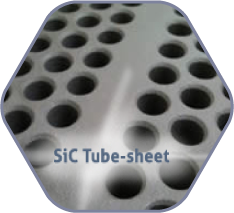
Carburo di Silicio Vetro - Vetro
Il design problem-free

Carburo di SilicioVetro e Vetro
Il carburo di silicio (SiC) è un materiale praticamente perfetto, con una unica pecca: gli scambiatori a fascio tubiero presentano una complicata giunzione tra tubi in SiC e piastre tubiere, normalmente realizzate in acciaio rivestito o in PTFE massello. Il design unico degli scambiatori in carburo di Silicio Super-Sic®, prevede la presenza di piastre tubiere in Carburo di Silicio, chimicamente inattaccabili e termicamente stabili. Ogni problema è, in tal modo, definitivamente risolto.Grazie alla collaborazione con importanti vetrificatori italiani, Ecarb propone una ampia gamma di colonne e reattori in acciaio smaltato.
Graphec® ST, graphite shell&tubes heat exchangers

Graphec® ST shell&tubes heat exchangers are extremely safe and strong. The tubes – exclusively made in Europe - are homologated according to AD-2000 N2 with grade G 30-00-220, the best in the market. The tube-sheetsts may be made of fine-grained graphite (Graphec® iSP) or ultra-fine grained graphite (Graphec® ILP), based on the requirements of each item. The joints between tubes and tube sheets are performed according to a gasket-less certified procedure. Tubes and tube-sheets can be reinforced with carbon fiber wrapping, Graphec® CFx, to increase resistance to mechanical and thermal stresses (in particular, the fatigue resistance).
The coupling between floating header, floating tube-sheetst and shell is designed with a double tightening system, in order to manage separately two indipendent functions: gaskets tightening and differential expansion compensation (with helical springs). Therefore, even in case of failure of springs, this system avoids leakages of corrosive fluid to the outside. Every single detail is designed to make Graphec ST robust and reliable, even in extreme conditions.
Each unit can develop up to 1600 m2 exchange surface and it is possible to integrate more bundles into a single unit (ST Multibundle), which works under optimal conditions of heat exchange and fluid velocity. Headers and shell can be made of a endless combination of materials and coatings. A long list of accessories (inpingement plate, anti-erosion, overflow crowns, ...) makes Graphec ST suitable for the most challenging and complicated services.
Gallery ↓






Graphec® RB and SB, graphite block heat exchangers

Great ease of maintenance and operation, compactness and versatility: these are the characteristics of graphite blocks heat exchangers, mainly used as condenser or as heaters in pickling lines.
Ecarb has two models of such a kind of unit: Graphec® RB (cylindrical blocks) and Graphec® SB (prismatic blocks). Blocks are available in materials Graphec® iSP (fine-grained, max 200 ° C), Graphec® ILP (ultra-fine grit, max 220 ° C) or Graphec xLP (with special impregnation, up to 430 ° C).
Diameter and type of holes, drilling path, number of blocks and passes are parameters optimised on the basis of specific process conditions. Accurate design and faultless construction ensures a longer lifetime. Each unit can develop up to 900 m2 of exchange surface. Headers and shell can be made in a endless combination of materials and coatings. A long list of accessories (inpingement plate, blocks sacrifice anti-erosion, overflow crowns, ...) make Graphec® RB and Graphec® SB suitable for every specific service.
Gallery ↓






Graphite columns

The graphite, because of its excellent corrosion resistance and the great thermal stability, allows severe operating conditions, often unsustainable for other materials or coatings.
Graphec® columns, packed or plates, are manufactured according to specifications of every single project. Available construction materials are graphite grades Graphec® iSP (max 200 ° C), Graphec® ILP (max 220 ° C) and Graphec® XLP (up to 430 ° C). Every detail is designed according to the most advanced engineering standards in order to maximize lifetime and to get easy and quick maintenance. Graphite columns can have large diameters (up to 2400 mm). Graphite can be reinforced with external carbon fiber wrapping, Graphec® CFx, in order to increase the resistance and intrinsic safety in the case of unforeseen and hazardous operating conditions. The graphite can also be armored with an external shell made of carbon steel.
Graphec® product line includes a full range of graphite internals:
Gallery ↓



Graphec® quenchers

Graphec® quenchers ensure rapid cooling of hot gases (up to 1800 ° C), by sudden evaporation of a liquid.
TAvailable construction materials are graphite grades Graphec® iSP (fine grain) or Graphec® ILP (ultra-fine grain). Graphec® quenchers may have also large diameter (up to 2400 mm). They can be reinforced with external carbon fiber wrapping, Graphec® CFx, in order to increase the resistance and make them safer in the case of unforeseen and hazardous operating conditions.
Depending on the characteristics of treated fumes, Ecarb produces three models of Graphec® quenchers:
Each geometry better suits to certain process conditions, such as the presence of particulates, the need to keep under control pressure drop or the variability of the feed flow rate. Every detail is designed to increase the lifetime of the equipment and to ensure an uniform distribution of the liquid, even under abnormal conditions.
Gallery ↓



Spares, rupture disks and accessories

Spare parts
Cylindrical and cubic blocks, nozzles, hoses, fittings, gaskets, headers: every component of your graphite unit is perfectly replicated using high-quality materials, thanks to reverse engineering techniques. Ecarb does not charge the price of spare parts, as manufacturer of original equipment do. This price policy allows a considerable savings on maintenance costs.
Accessories and bursting disks
Graphec® product line includes the following graphite components and accessories:
Gallery ↓






PTFE lined equipment

PTFE protects against most aggressive fluids in a wide range of operating conditions. The design of our equipment is made according to specific construction standards of the selected lining technique. The metallic parts are designed and manufactured to get a precise and uniform application of the liner.
High-density sheet lining
Columns and vessels, even of large diameter, are lined with sheets made of virgin PTFE. The sheets are skived from sintered high-density massive rods, having lower permeability in comparison to extruded or pressed PTFE. Sheets are applied in adherence to the inner surface. Continuity of the coating is guaranteed by weldings, finally checked with spark test.
Roto-lining
The application in rotary kiln of 3-5 mm of ETFE or Teflon lining allows the creation of seamless layer, perfectly resistant to full vacuum up to high temperature. It is an advanced technology that eliminates many of the critical problems originated by other coating techniques. It is available for diameters up to 2200 mm.
Dual protection system
Dual protection system is technique developed and experimented by Ecarb for critical services. To eliminate the risk of corrosion due to slow permeation after years of operation, metallic surface is protected by a second layer: a coating (approx 1 mm) typically made of ECTFE or PFA. The interspace between two liners is kept under aspiration to purge fluids eventually permeated or to ensure safe operation under vacuum conditions.
Gallery ↓



PVDF, ECTFE, ETFE and PFA coatings

The application of fluorine-polymeric coating of thickness up to 1 mm is a protection technique alternative to heavier PTFE lining. The design of our equipment is made according to specific construction standards of each material. The metallic parts are designed and manufactured to obtain a uniform and precise coating.
Available materials:
These polymers are sprayed and baked in ovens, ensuring perfect adherence to the inner surface of metallic shell. The first layer is applied after the proper sandblasting procedure and it provides high adhesion of the coating, necessary to enable resistance to vacuum and high temperature. The next layers are intended to retard the permeation, along the multilayer structure.
The main characteristics of the fluorine-polymer coating are:
Gallery ↓



Rubber and ebonite

Ecarb manufactures rubber or ebonite lined equipments, using European high quality rubber and ebonite, resistant to a wide range of chemicals. Our items are designed according to standards, specific for each material. Metallic parts are designed and produced to ensure a homogeneous adherence and perfect sealing.
Available Materials:
These polymers are applied to inner surface of metallic equipment, in temperature controlled autoclaves, after an appropriate sand-blasting process, according DIN and EN norms. It is possible also to overlap several layers, made of different materials. Due to the perfect adhesion of lining to the metal, rubber lining is ideal for full vacuum operation.
Main features of our linings are:
Gallery ↓



PP, PVC e PVFD process equipment

Ecarb designs and manufactures vessels and equipment made of plastic or FRP. Mechanical calculation and manufacturing is carried out in compliance with most reliable international standards; in particular FRP equipment are designed in accordance to BS 4994, the most safe and complete reference norm.
Our product portfolio includes:
On the basis of process fluid and working conditions, Ecarb will advise the choice of the best material and we will help to identify the suitable manufacturing standards.
Gallery ↓



Piping PTFE

PTFE Piping & fitting
A complete range of PTFE lined pipes and fittings, made of lined carbon steel or stainless steel, according to international standards UNI, DIN (DIN2848) and ANSI. Lining is produced from virgin PTFE, using the most suitable manufacturing technique: PTFE can be extruded, molded or rotolined. Fittings and Tees are available with PTFE or PFA lining, depending on the application. Heavy duty piping, with diameter up to DN600, can handle high vacuum grades. The lining can be charged with graphite (conductive), when it is required by ATEX. On request, several accessories can be choosen: earthing lugs, customized painting, steel reinforcement, etc.
Expansion Joints
Our product range includes expansion joints with 2, 3 and 5 convolutes, made of white or black (antistatic) PTFE, with outer stainless steel rings to ensure safety and long lifetime. In case vacuum resistance is needed, our bellows may be equipped with PTFE lined inner ring. Flanges can be painted, according our special painting system, or galvanized. Graphec® expansion joints are studied to be specifically used on graphite nozzles.
Manifold
Due to safety reasons or lack of room, standard fitting cannot allow installation of flanged pipeline. In such a case, flangeless customized manifold will be designed and created.
Gallery ↓



Metallic shell&tubes heat exchangers

Ecarb designs and manufactures shell & tubes heat exchangers, according to each project specification. Our units are ideal for chemical, pharmaceutical, petrochemical and oil & gas industries. Every detail is adapted to specific process service (reboiler, condenser, heater / cooler) or to requested geometry (Kettle evaporator, bayonet, etc.)
Available materials:
Ecarb’s manufacturing system is certified according to European Pressure Equipment Directive PED (97/23/EG). We autonomously manage the design and the certification in compliance with main international standards (ASME, AD-2000, VSR and EN) and according to TEMA construction standards.
In order to get corrosion protection for specific applications (i.e. cooling of sulphuric acid), an anodic protection system can be installed in our shell & tube exchangers. Protective film is formed on the surface of metallic shell, by mean of an electronic controlled tension. Ecarb is able to design heat exchangers with embedded anodic protection device and to set up and start up the electronic protection control system.
Gallery ↓



Columns, vessels and reactors

Ecarb designs and manufactures reactors, columns and vessels for chemical, pharmaceutical, petrochemical and oil & gas industries, according to each project specification. Every detail is adapted to the requested process service, on the basis of the geometry of the equipment: stirred reactors, tubular reactors, reflux vessel, flash drum, storage tanks, distillation columns (with packing or plates), falling film absorber, etc.
Available materials:
Ecarb’s manufacturing system is certified according to European Pressure Equipment Directive PED (97/23/EG) so to autonomously manage the design and the certification in compliance with main international standards (ASME, AD-2000, VSR and EN). The knowledge of the chemical process operating principles allow to ours engineers to take maximum care of every detail, in order to adapt each item to its working conditions. We will propose and include all suitable accessories and components that increase safety, lifetime and reliability.
Gallery ↓



Plates heat exchangers

A complete range of equipment, suitable to meet customer specific needs. Ecarb assemblies plates heat exchangers, welded or with gaskets. Thanks to the wide availability of dimensions, gasket materials and frames, we will select the cheapest and smartest solution for each application.
Plates and gaskets heat exchangers are equipped with self-gripping gaskets (Nitrile, EPDM, Viton and NBRHT), providing a maximum operating temperature of 160 °C. Each plate has an heat transfer area from 0,1 to 3,5 m2, thickness from 0,35 to 0,8 mm, connection up to DN500 (20"). Free flow plate system (with higher gap between plates) is available in case of dirty fluids.
Welded plates heat exchangers are capable to work under severe and challenging process conditions, they can work under high pressure and temperature, they can handle dirty fluids or they can work as condenser, under vacuum. It is possible to choice between two different geometries, with rectangular section or with circular section, with several plate types: dimped, corrugated or embossed. The plates are easily accessible to simplify cleaning operation or to enable processing of fluids rich of solids
Available materials:
Gallery ↓



Silicon carbide Super-SIC® heat exchangers
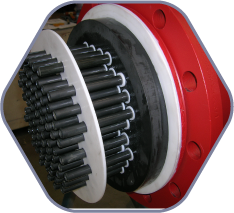
SUPER-SIC® heat exchangers have a unique design with silicon carbide (SiC) tubes and massive SiC tube-sheets. They are designed to operate under severe and corrosive conditions, being SiC universally inert. Other suppliers propose tube-sheets made of PTFE or glass lined steel, which will lead to leakages even after short operation periods.Leakages can be due to deformation of the lining, to permeation of corrosion media up to the metallic substrate or to loss of elasticity of the sealing system, during thermal cycles. Our massive SiC tube-sheets is the unique and final solution of these problems, due to usage of hard, resistant and eternal material.
Main features of SUPER-SIC® units:
Double tube-sheet
It is possible to segregate the process fluid and the service fluid with a separation chamber. In case of failure of O-rings sealing, no mix will occur between the two fluids (according to GNP criterium). Separation chamber can be eventually pressurized to avoid any leakage towards the external. Primary tube-sheet, in contact with process fluid, is always made of massive SiC.
Sealing system
Each tube end is connected to the primary and secondary tube-sheet, with two pairs of FKM o-rings. Double o-ring avoids loss of elastic properties of the whole system. Moreover double O-rings set will softly support SiC tubes, to prevent from shocks or vibrations.
Gallery ↓



Glass lined vessels

When glass marries the steel
In cooperation with selected Italian partner, Ecarb designs and manufactures glass lined process unit for chemical and pharmaceutical industries, according to customer’s process specification. Any detail is studied and designed for the specific application and it is optimised on the basis of the geometry of the equipment: reactors, vessels or columns. Reactors are available coording to DIN standards, with full set of certifications.
Safe mechanical calculation, optimal definition of glass lining process in controlled temperature ovens and accurate selection of glass powder blend: every step of the manufacturing process is performed to ensure the perfect execution.Each item is double checked: metallic shell is tested before glass-lining (X-ray, hydraulic test) and a full set of tests is carried out at the end of lining process, according to reference standards. Spark test is always performed to ensure constant lining thickness. Our sealing system foresee the use of three layers envelope gaskets or Gore® gaskets, specific for enameled steel, together with certified clamps.
Gallery ↓



Graphec® PTFE expansion joints

Expansion joints have an important function in preventing excessive stresses, caused by thermal expansion, improper loads or vibrations. These solicitations may damage nozzles or entire pipelines. Being chemically inert, PTFE is the ideal construction material for bellows, to be installed on graphite nozzles of Graphec® units, used for corrosive fluids. Graphec® PTFE compensators are designed to be installed - without modification - on graphite nozzles of our equipment.
PTFE Graphec® expansion joints are available in
The quality of raw materials and the construction techniques allow to obtain high pressure rating, even for large diameters and high temperature. Upon request, our sales service will provide technical and commercial data sheets, with typical gauges of each diameter.
Gallery ↓



Graphec® safety bursting disks
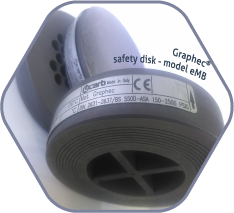
Graphec® safety disks ensure safe, reliable and precise rupture behavior, protecting your equipment from unpredictable pressure fluctuations. Compared with metallic ones, graphite safety disks guarantee following advantages:
Graphec® product line includes three disk models, to face several working conditions (temperature and pressure).
All three models are available from DN25 up to DN 600 (1” to 24”), are suitable for UNI or ANSI flanges and certificated according to PED. On request is possible to have finest calibration, up to +/- 5%.
We can provide disks interchangeable with those of main manufacturers, with bursting pressure from 0,1 bar and vacuum resistant.
Gallery ↓



“OneButton” HCl Synthesis Unit

Commercial HCl solution are produced by absorption of hot HCl gas, which is sinthetized by combustion of H2 and Cl2. "One button" units are available as skid mounted package, "turn key", fully equipped and ready for operating. Our synthesis unit has the burner placed at bottom of the furnace and this design offers great advantages:
Gallery ↓



HCl distillation plant

Graphec® OneButton systems offer taylor-made solutions for Hydrochloric Acid distillation. Premium systems which ensure the minimum investment cost thanks to internal production of critical items.
Pressure swing iper-azeotropic distillation: two distillation stages working at different pressure (one under vacuum conditions, the other with high pressure) allow to distillate Hydrocloridric Acid over azeotropic concentration (~20% at atmospheric pressure), exploiting the change of azeotropic concentration with pressure.
Extractive distillation of HCl with Sulfuric Acid. In order to exceed azeotropic concentration, it is possible to use the great hygroscopic properties of Sulfuric Acid, which dehydrates diluted Hydrocloridric Acid, inside an extracting column. A second column recovers spent aulfuric acid, to recirculate it to extractino column. This recycle reduces drastically acid consumption. Each stage of the process needs an accurate material selection, in order to guarantee longer operating life of equipment.
Azeotropic distillation (purification): azeotropic solutions of HCl are evaporated and condensate in single or double stage evaporator, to remove traces of metallic ions (Fe,Zn,Pb,….) or other heavy compounds.
Gallery ↓



HCl purification and stripping

"OneButton" process packages offer tailor-made solutions for stripping and purification of Hydrochloric Acid. Premium systems are possible with very low investment cost, thanks to internal production of most of the critical items.
Azeotropic Distillation (purification): azeotropic solutions of HCl are evaporated and condensate in single or double stage evaporator, to remove traces of metallic ions (Fe,Zn,Pb,….) or other heavy compounds.
HCl stripping: the elimination of low-boiling organic fractions in performed into desorption / absorption sections, that enable to purify, recover HCl and concentrate to get the requested commercial grades.
Gallery ↓



Absorption units

“OneButton” HCl absorption units offer specific solutions for quenching, absorption and recovery of hydrocloric Acid.
HCL absorption and recovery unit. By treating gases with high HCl content, it is possible to recover high quantities of acid at a commercial grade (concentration up to 37%) and high purity. HCl absorption generate heat, which must be continuously removed. Gases may be treated into adiabatic absorption columns, often equipped with external heat exchanger, or into isothermal falling film absorber. When feed gas are hot, a quencer must be installed at the package inlet (visit Graphec® quenchers web page for further details).
Hot gases quenching. From industrial or civil waste combustion process, hot spent gases (up to 1800 °C) with high content acids (HCl, H2SO4) are suddenly cooled in graphite adiabatic quencher, by means of evaporation of quenching solution (visit Graphec® quenchers web page for further details). Saturated gas is then condensed and absorbed in process sections designed to obtain desired acid concentration, on the basis of project specifications.
Hydrochloric acid scrubbers. Scrubbers are necessary to avoid HCl emission, due to its high volatility. Visit "One-button scrubbers" web page for further details.
Gallery ↓



HCl Scrubbers

"OneButton" scrubbers are specifically designed for HCl containing gas treatment. Our systems are fully automatic, PLC controlled, and their premium quality and technology are combined with the minimum investment cost. Main items are produced internally.
Scrubbers are used to avoid any emission of pollutants into atmosphere. Due to its high volatility, HCl can be released from undesired vent points onto storage tanks or from process equipment.
In order to reduce emissions under permitted limits, it is possible to use single stage or multistage scrubbers. The liquid, typically water or caustic soda solution, captures the acid gas by absorbing it into absorption columns (scrubbers). Multi-stage scrubbers are usually chosen when HCl is relatively concentrated into vent gas. First stage often needs an heat exchanger beside to the washing column, to remove absorption heat. In case of double stage scrubber, weak acid from first stage can be recovered.
Scrubbers are plastic (PP or PVC-FRP) or graphite columns and they are are equipped with a demister to avoid aerosol emission. To ensure water and caustic soda continuous make up, control system foreseen level sensors, PH and / or redox detectors. Columns, pumps, heat exchangers and instrumentation are selected to ensure longer operating life and lower investment costs.
Gallery ↓



High purity ferric chloride solution

Ferric Chloride is an inorganic additive used in sewage treatment and drinking water production. Graphec® OneButton systems allow production of high purity ferric chloride by mixing and reacting of hydrochloric acid and iron oxide powder.
Our packages are turn-key units, complete of intermediate storage vessels, powder handling device, reaction and filtration sections. If not available on site, utilities are integrated in the package. Commissioning and start-up assistance can be provided in order to train operators to manage the unit and to minimize downtime.
Our graphite heat exchangers are integrated into the system to allow almost complete heat recovery, so to almost eliminate energy costs for hot water and cooling tower. Complete thermal recovery leads to many advantages such as: lower operating costs (competitiveness against traditional system), low environmental impact and lower investment cost for utilities.
Gallery ↓



Ferric chlorides from pickling solution recover

Spent pickling bathes are not a waste to be expensively disposed, but a renewable resource to produce a valuable product. Ferric Chloride is an inorganic additive used in sewage treatment and drinking water production. Graphec® OneButton systems allow production of ferric chloride (with basic purity) starting from exhaust pickling solutions.
Our packages are turn-key units, complete of intermediate storage vessels, oil removing section, reaction section, concentration unit and scrubber. If not available on site, utilities are integrated in our package. Commissioning and start-up assistance can be provided in order to show system features and to train operators to manage the unit and minimize downtime.
Exhaust pickling solution can be completely re-used thanks our systems. Pickling solutions are purified from organic content (oil and grease) and they are treated into reactors by oxidation of ferrous chloride to ferric chloride. Intermediate ferric chloride weak solution is concentrated into a double stage evaporator. Heat saving devices are implemented in the system to minimize steam and reactants consumption.
Gallery ↓



PAC, Poly - Aluminium Chloride

PAC is a precius additive used into sewage treatment, drinking water production and body care products. Due to high aluminium content, high capacity to coagulate and its low specific consumption, PAC is the most efficient organic additive available on the market.
Graphec® OneButton systems allow production of high purity and high basicity PAC by mixing and reacting aluminium hydroxide and hydrochloric acid.
Our packages are turn key units, complete of intermediate storage vessels, powder handling system, reaction and filtration unit. If not available on site, utilities are integrated into our package. Commissioning and start-up assistance can be provided in order to train operators to manage the unit and minimize downtime.Each item is designed and studied to overcome any erosion or corrosion problem and according to specific safety standards for PAC. Enameled reactors are designed with special thickness, graphite heat exchangers are equipped with anti – erosion device: every component is designed to increase efficiency and to decrease batch time, to get the optimum balance between investment cost and economical performance.
Gallery ↓



Sulfuric acid dilution systems

Graphec® "OneButton" Sulfuric acid dilution units are skid mounted turn-key systems completely automatic. Acid dilution produces a sudden and relevant heat release, which causes quick temperature increase, sometimes over the evaporation temperature of diluted acid.
Graphec® OneButton normally include heat exchanger (usually graphite Shell and Tubes), static mixer (made of graphite / PTFE), acid resistant piping and valves (PTFE lined), conductivity measurement device, metallic frame, instruments, control valves and control panel (with PLC). If needed, following accessories can be integrated: feed pumps or product booster, automate unit to control delivery to storage tanks, cooling tower, DCS interface control and recording station.
Graphec® OneButton ensures:
Integrated control system is eventually equipped with recorder and it is able to regulates interlocks and sequences. No manual operation is needed with “OneButton” logic, workers must only select required concentration value, press START button and wait few second to reach steady state.
Gallery ↓



PAC – Polialluminiocloruro

Il PAC è un additivo pregiato, utilizzato nel trattamento delle acque reflue, nella potabilizzazione delle acque e in prodotti per la cura del corpo. Per tenore di Al, alto potere coagulante e costo complessivo, è l’additivo inorganico più efficace disponibile sul mercato. Gli impianti Graphec® OneButton consentono la produzione di soluzioni commerciali PAC (a elevatissima purezza e alta basicità) a partire allumina idrata e acido cloridrico.
I nostri impianti sono forniti chiavi in mano, completi delle sezioni di stoccaggio, movimentazione solidi, reazione e filtrazione. Le utilities, laddove non disponibili, sono integrate nel package. Un servizio di assistenza allo start up vi consentirà di familiarizzare con il processo in modo da assicurare da subito piena capacità produttiva ed autonomia gestionale.
Ogni item è progettato in base a specifiche studiate per far fronte ai problemi di erosione, corrosione e sicurezza tipici degli impianti PAC. Dai reattori vetrificati, con spessori maggiorati, fino agli scambiatori in grafite minuti di dispositivi anti-erosione: tutto è studiato per aumentare la resa, diminuire i tempi di batch ed esercire l’impianto in sicurezza ed economia.
Gallery ↓



Graphec® graphite internals for mass transfer
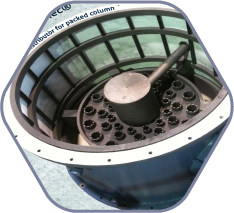
Graphite internals are the ideal complement of graphite and PTFE lined columns. On the basis of a long process competences and experience, our engineers are able to perform accurate selection of the suitable internals for each process unit, from distillation column to falling film absorber.
Graphec® column internals show significant advantages, when compared to plastic internals (PTFE) or metallic internals:
Graphec® internals product line includes:
Gallery ↓



Sulfuric Acid concentration

"OneButton" process packages offer tailor-made solutions for Sulfuric Acid concentration. Premium systems are possible with very low investment cost, thanks to internal production of most of the critical items.
Depending on acid feed and the desired final acid grade, the concentration can be performed into one or two evaporation stages, working at different pressures, or in a single distillation column. Our packages are provided with every device useful to reduce the consumption of energy and to ensure simplicity and cost-saving.
The different process devices require a careful material selection, in order to ensure long useful life for each component. Graphite, PTFE, tantalum, Hastelloy: sulfuric acid concentration units require perfect awareness of corrosion mechanism and the detailed knowledge of the most suitable materials for each condition of use.
Gallery ↓



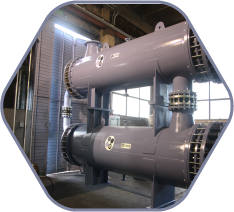
Graphec® Heat exchangers
Not only graphite

Graphec® Heat exchangers
Shell & tubes, block type and plates heat exchangers can be made of graphite, exotic metals or silicon carbide. We make available a wide range of competences related to heat transfer to identify the best possible solution. Construction material selection, geometry identification, set up of the useful accessories, optimal thermal sizing, safe mechanical calculation, advanced manufacturing system and a full set of international certifications: every step of heat exchangers production is carried out to minimize the total cost of ownership for our customers. Graphec®: heat transfer among corrosive fluids.
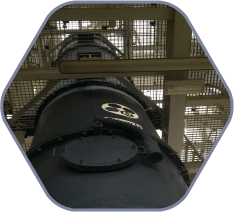
Columns and quenchers
Graphec®, solution for mass transfer
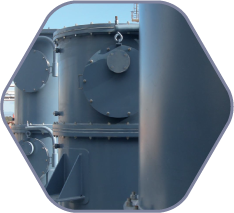
Columns and quenchers
A range of products (and materials) suitable for the most challenging process services, related to mass transfer among corrosive medias. Distillation, absorption/desorption, quenching, saturation, extraction: a perfect design will match the specific requirements of each service. Graphite, exotic metals, plastics and lined steel. We make available our competences on corrosion resistant materials to support the optimal equipment choice; we provide process calculation and define accurately each detail, according to customer’s specifications. Graphec® process equipment have the highest technical quality and the longest lifetime.
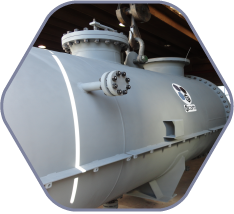
Vessels and reactors
corrosive fluids - critical services

Vessels and reactors
Graphite, glass lined, exotic metals, plastic and plastic lined steel; when standard pressure vessels design is not enough, we support you with our expertise on corrosion resistance, to supply the most safe and appropriate equipment for each application. Our design and construction system is certified according to PED so that we can design reactors, vessels and tanks using appropriate calculation code and the ideal construction standard for the selected material. A wide range of international certification is available.
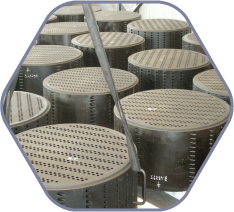
Spare parts & Accessories
Quality in details

Spare parts & Accessories
Accurate selection of construction materials*, proper design, perfect manufacturing by high specialized technicians; these are the k-factors of the high quality of our accessories and components. Graphite equipments spare parts from any original manufacturer or type (blocks, tubes, nozzles), bursting disks, PTFE piping & fitting: Quality and attention to details. And our prices policy aims to satisfy even the most discerning purchaser.
*Ecarb uses only homologated graphite, fabricated in Europe or U.S.A.
Graphec® ST, graphite shell&tubes heat exchangers

Graphec® ST shell&tubes heat exchangers are extremely safe and strong. The tubes – exclusively made in Europe - are homologated according to AD-2000 N2 with grade G 30-00-220, the best in the market. The tube-sheetsts may be made of fine-grained graphite (Graphec® iSP) or ultra-fine grained graphite (Graphec® ILP), based on the requirements of each item. The joints between tubes and tube sheets are performed according to a gasket-less certified procedure. Tubes and tube-sheets can be reinforced with carbon fiber wrapping, Graphec® CFx, to increase resistance to mechanical and thermal stresses (in particular, the fatigue resistance).
The coupling between floating header, floating tube-sheetst and shell is designed with a double tightening system, in order to manage separately two indipendent functions: gaskets tightening and differential expansion compensation (with helical springs). Therefore, even in case of failure of springs, this system avoids leakages of corrosive fluid to the outside. Every single detail is designed to make Graphec ST robust and reliable, even in extreme conditions.
Each unit can develop up to 1600 m2 exchange surface and it is possible to integrate more bundles into a single unit (ST Multibundle), which works under optimal conditions of heat exchange and fluid velocity. Headers and shell can be made of a endless combination of materials and coatings. A long list of accessories (inpingement plate, anti-erosion, overflow crowns, ...) makes Graphec ST suitable for the most challenging and complicated services.
Gallery ↓






Graphec® RB and SB, graphite block heat exchangers

Great ease of maintenance and operation, compactness and versatility: these are the characteristics of graphite blocks heat exchangers, mainly used as condenser or as heaters in pickling lines.
Ecarb has two models of such a kind of unit: Graphec® RB (cylindrical blocks) and Graphec® SB (prismatic blocks). Blocks are available in materials Graphec® iSP (fine-grained, max 200 ° C), Graphec® ILP (ultra-fine grit, max 220 ° C) or Graphec xLP (with special impregnation, up to 430 ° C).
Diameter and type of holes, drilling path, number of blocks and passes are parameters optimised on the basis of specific process conditions. Accurate design and faultless construction ensures a longer lifetime. Each unit can develop up to 900 m2 of exchange surface. Headers and shell can be made in a endless combination of materials and coatings. A long list of accessories (inpingement plate, blocks sacrifice anti-erosion, overflow crowns, ...) make Graphec® RB and Graphec® SB suitable for every specific service.
Gallery ↓






Graphite columns

The graphite, because of its excellent corrosion resistance and the great thermal stability, allows severe operating conditions, often unsustainable for other materials or coatings.
Graphec® columns, packed or plates, are manufactured according to specifications of every single project. Available construction materials are graphite grades Graphec® iSP (max 200 ° C), Graphec® ILP (max 220 ° C) and Graphec® XLP (up to 430 ° C). Every detail is designed according to the most advanced engineering standards in order to maximize lifetime and to get easy and quick maintenance. Graphite columns can have large diameters (up to 2400 mm). Graphite can be reinforced with external carbon fiber wrapping, Graphec® CFx, in order to increase the resistance and intrinsic safety in the case of unforeseen and hazardous operating conditions. The graphite can also be armored with an external shell made of carbon steel.
Graphec® product line includes a full range of graphite internals:
Gallery ↓



Graphec® quenchers

Graphec® quenchers ensure rapid cooling of hot gases (up to 1800 ° C), by sudden evaporation of a liquid.
TAvailable construction materials are graphite grades Graphec® iSP (fine grain) or Graphec® ILP (ultra-fine grain). Graphec® quenchers may have also large diameter (up to 2400 mm). They can be reinforced with external carbon fiber wrapping, Graphec® CFx, in order to increase the resistance and make them safer in the case of unforeseen and hazardous operating conditions.
Depending on the characteristics of treated fumes, Ecarb produces three models of Graphec® quenchers:
Each geometry better suits to certain process conditions, such as the presence of particulates, the need to keep under control pressure drop or the variability of the feed flow rate. Every detail is designed to increase the lifetime of the equipment and to ensure an uniform distribution of the liquid, even under abnormal conditions.
Gallery ↓



Spares, rupture disks and accessories

Spare parts
Cylindrical and cubic blocks, nozzles, hoses, fittings, gaskets, headers: every component of your graphite unit is perfectly replicated using high-quality materials, thanks to reverse engineering techniques. Ecarb does not charge the price of spare parts, as manufacturer of original equipment do. This price policy allows a considerable savings on maintenance costs.
Accessories and bursting disks
Graphec® product line includes the following graphite components and accessories:
Gallery ↓






PTFE lined equipment

PTFE protects against most aggressive fluids in a wide range of operating conditions. The design of our equipment is made according to specific construction standards of the selected lining technique. The metallic parts are designed and manufactured to get a precise and uniform application of the liner.
High-density sheet lining
Columns and vessels, even of large diameter, are lined with sheets made of virgin PTFE. The sheets are skived from sintered high-density massive rods, having lower permeability in comparison to extruded or pressed PTFE. Sheets are applied in adherence to the inner surface. Continuity of the coating is guaranteed by weldings, finally checked with spark test.
Roto-lining
The application in rotary kiln of 3-5 mm of ETFE or Teflon lining allows the creation of seamless layer, perfectly resistant to full vacuum up to high temperature. It is an advanced technology that eliminates many of the critical problems originated by other coating techniques. It is available for diameters up to 2200 mm.
Dual protection system
Dual protection system is technique developed and experimented by Ecarb for critical services. To eliminate the risk of corrosion due to slow permeation after years of operation, metallic surface is protected by a second layer: a coating (approx 1 mm) typically made of ECTFE or PFA. The interspace between two liners is kept under aspiration to purge fluids eventually permeated or to ensure safe operation under vacuum conditions.
Gallery ↓



PVDF, ECTFE, ETFE and PFA coatings

The application of fluorine-polymeric coating of thickness up to 1 mm is a protection technique alternative to heavier PTFE lining. The design of our equipment is made according to specific construction standards of each material. The metallic parts are designed and manufactured to obtain a uniform and precise coating.
Available materials:
These polymers are sprayed and baked in ovens, ensuring perfect adherence to the inner surface of metallic shell. The first layer is applied after the proper sandblasting procedure and it provides high adhesion of the coating, necessary to enable resistance to vacuum and high temperature. The next layers are intended to retard the permeation, along the multilayer structure.
The main characteristics of the fluorine-polymer coating are:
Gallery ↓



Rubber and ebonite

Ecarb manufactures rubber or ebonite lined equipments, using European high quality rubber and ebonite, resistant to a wide range of chemicals. Our items are designed according to standards, specific for each material. Metallic parts are designed and produced to ensure a homogeneous adherence and perfect sealing.
Available Materials:
These polymers are applied to inner surface of metallic equipment, in temperature controlled autoclaves, after an appropriate sand-blasting process, according DIN and EN norms. It is possible also to overlap several layers, made of different materials. Due to the perfect adhesion of lining to the metal, rubber lining is ideal for full vacuum operation.
Main features of our linings are:
Gallery ↓



PP, PVC e PVFD process equipment

Ecarb designs and manufactures vessels and equipment made of plastic or FRP. Mechanical calculation and manufacturing is carried out in compliance with most reliable international standards; in particular FRP equipment are designed in accordance to BS 4994, the most safe and complete reference norm.
Our product portfolio includes:
On the basis of process fluid and working conditions, Ecarb will advise the choice of the best material and we will help to identify the suitable manufacturing standards.
Gallery ↓



Piping PTFE

PTFE Piping & fitting
A complete range of PTFE lined pipes and fittings, made of lined carbon steel or stainless steel, according to international standards UNI, DIN (DIN2848) and ANSI. Lining is produced from virgin PTFE, using the most suitable manufacturing technique: PTFE can be extruded, molded or rotolined. Fittings and Tees are available with PTFE or PFA lining, depending on the application. Heavy duty piping, with diameter up to DN600, can handle high vacuum grades. The lining can be charged with graphite (conductive), when it is required by ATEX. On request, several accessories can be choosen: earthing lugs, customized painting, steel reinforcement, etc.
Expansion Joints
Our product range includes expansion joints with 2, 3 and 5 convolutes, made of white or black (antistatic) PTFE, with outer stainless steel rings to ensure safety and long lifetime. In case vacuum resistance is needed, our bellows may be equipped with PTFE lined inner ring. Flanges can be painted, according our special painting system, or galvanized. Graphec® expansion joints are studied to be specifically used on graphite nozzles.
Manifold
Due to safety reasons or lack of room, standard fitting cannot allow installation of flanged pipeline. In such a case, flangeless customized manifold will be designed and created.
Gallery ↓



Metallic shell&tubes heat exchangers

Ecarb designs and manufactures shell & tubes heat exchangers, according to each project specification. Our units are ideal for chemical, pharmaceutical, petrochemical and oil & gas industries. Every detail is adapted to specific process service (reboiler, condenser, heater / cooler) or to requested geometry (Kettle evaporator, bayonet, etc.)
Available materials:
Ecarb’s manufacturing system is certified according to European Pressure Equipment Directive PED (97/23/EG). We autonomously manage the design and the certification in compliance with main international standards (ASME, AD-2000, VSR and EN) and according to TEMA construction standards.
In order to get corrosion protection for specific applications (i.e. cooling of sulphuric acid), an anodic protection system can be installed in our shell & tube exchangers. Protective film is formed on the surface of metallic shell, by mean of an electronic controlled tension. Ecarb is able to design heat exchangers with embedded anodic protection device and to set up and start up the electronic protection control system.
Gallery ↓



Columns, vessels and reactors

Ecarb designs and manufactures reactors, columns and vessels for chemical, pharmaceutical, petrochemical and oil & gas industries, according to each project specification. Every detail is adapted to the requested process service, on the basis of the geometry of the equipment: stirred reactors, tubular reactors, reflux vessel, flash drum, storage tanks, distillation columns (with packing or plates), falling film absorber, etc.
Available materials:
Ecarb’s manufacturing system is certified according to European Pressure Equipment Directive PED (97/23/EG) so to autonomously manage the design and the certification in compliance with main international standards (ASME, AD-2000, VSR and EN). The knowledge of the chemical process operating principles allow to ours engineers to take maximum care of every detail, in order to adapt each item to its working conditions. We will propose and include all suitable accessories and components that increase safety, lifetime and reliability.
Gallery ↓



Plates heat exchangers

A complete range of equipment, suitable to meet customer specific needs. Ecarb assemblies plates heat exchangers, welded or with gaskets. Thanks to the wide availability of dimensions, gasket materials and frames, we will select the cheapest and smartest solution for each application.
Plates and gaskets heat exchangers are equipped with self-gripping gaskets (Nitrile, EPDM, Viton and NBRHT), providing a maximum operating temperature of 160 °C. Each plate has an heat transfer area from 0,1 to 3,5 m2, thickness from 0,35 to 0,8 mm, connection up to DN500 (20"). Free flow plate system (with higher gap between plates) is available in case of dirty fluids.
Welded plates heat exchangers are capable to work under severe and challenging process conditions, they can work under high pressure and temperature, they can handle dirty fluids or they can work as condenser, under vacuum. It is possible to choice between two different geometries, with rectangular section or with circular section, with several plate types: dimped, corrugated or embossed. The plates are easily accessible to simplify cleaning operation or to enable processing of fluids rich of solids
Available materials:
Gallery ↓



Silicon carbide Super-SIC® heat exchangers

SUPER-SIC® heat exchangers have a unique design with silicon carbide (SiC) tubes and massive SiC tube-sheets. They are designed to operate under severe and corrosive conditions, being SiC universally inert. Other suppliers propose tube-sheets made of PTFE or glass lined steel, which will lead to leakages even after short operation periods.Leakages can be due to deformation of the lining, to permeation of corrosion media up to the metallic substrate or to loss of elasticity of the sealing system, during thermal cycles. Our massive SiC tube-sheets is the unique and final solution of these problems, due to usage of hard, resistant and eternal material.
Main features of SUPER-SIC® units:
Double tube-sheet
It is possible to segregate the process fluid and the service fluid with a separation chamber. In case of failure of O-rings sealing, no mix will occur between the two fluids (according to GNP criterium). Separation chamber can be eventually pressurized to avoid any leakage towards the external. Primary tube-sheet, in contact with process fluid, is always made of massive SiC.
Sealing system
Each tube end is connected to the primary and secondary tube-sheet, with two pairs of FKM o-rings. Double o-ring avoids loss of elastic properties of the whole system. Moreover double O-rings set will softly support SiC tubes, to prevent from shocks or vibrations.
Gallery ↓



Glass lined vessels

When glass marries the steel
In cooperation with selected Italian partner, Ecarb designs and manufactures glass lined process unit for chemical and pharmaceutical industries, according to customer’s process specification. Any detail is studied and designed for the specific application and it is optimised on the basis of the geometry of the equipment: reactors, vessels or columns. Reactors are available coording to DIN standards, with full set of certifications.
Safe mechanical calculation, optimal definition of glass lining process in controlled temperature ovens and accurate selection of glass powder blend: every step of the manufacturing process is performed to ensure the perfect execution.Each item is double checked: metallic shell is tested before glass-lining (X-ray, hydraulic test) and a full set of tests is carried out at the end of lining process, according to reference standards. Spark test is always performed to ensure constant lining thickness. Our sealing system foresee the use of three layers envelope gaskets or Gore® gaskets, specific for enameled steel, together with certified clamps.
Gallery ↓



Graphec® PTFE expansion joints

Expansion joints have an important function in preventing excessive stresses, caused by thermal expansion, improper loads or vibrations. These solicitations may damage nozzles or entire pipelines. Being chemically inert, PTFE is the ideal construction material for bellows, to be installed on graphite nozzles of Graphec® units, used for corrosive fluids. Graphec® PTFE compensators are designed to be installed - without modification - on graphite nozzles of our equipment.
PTFE Graphec® expansion joints are available in
The quality of raw materials and the construction techniques allow to obtain high pressure rating, even for large diameters and high temperature. Upon request, our sales service will provide technical and commercial data sheets, with typical gauges of each diameter.
Gallery ↓



Graphec® safety bursting disks

Graphec® safety disks ensure safe, reliable and precise rupture behavior, protecting your equipment from unpredictable pressure fluctuations. Compared with metallic ones, graphite safety disks guarantee following advantages:
Graphec® product line includes three disk models, to face several working conditions (temperature and pressure).
All three models are available from DN25 up to DN 600 (1” to 24”), are suitable for UNI or ANSI flanges and certificated according to PED. On request is possible to have finest calibration, up to +/- 5%.
We can provide disks interchangeable with those of main manufacturers, with bursting pressure from 0,1 bar and vacuum resistant.
Gallery ↓



“OneButton” HCl Synthesis Unit

Commercial HCl solution are produced by absorption of hot HCl gas, which is sinthetized by combustion of H2 and Cl2. "One button" units are available as skid mounted package, "turn key", fully equipped and ready for operating. Our synthesis unit has the burner placed at bottom of the furnace and this design offers great advantages:
Gallery ↓



HCl distillation plant

Graphec® OneButton systems offer taylor-made solutions for Hydrochloric Acid distillation. Premium systems which ensure the minimum investment cost thanks to internal production of critical items.
Pressure swing iper-azeotropic distillation: two distillation stages working at different pressure (one under vacuum conditions, the other with high pressure) allow to distillate Hydrocloridric Acid over azeotropic concentration (~20% at atmospheric pressure), exploiting the change of azeotropic concentration with pressure.
Extractive distillation of HCl with Sulfuric Acid. In order to exceed azeotropic concentration, it is possible to use the great hygroscopic properties of Sulfuric Acid, which dehydrates diluted Hydrocloridric Acid, inside an extracting column. A second column recovers spent aulfuric acid, to recirculate it to extractino column. This recycle reduces drastically acid consumption. Each stage of the process needs an accurate material selection, in order to guarantee longer operating life of equipment.
Azeotropic distillation (purification): azeotropic solutions of HCl are evaporated and condensate in single or double stage evaporator, to remove traces of metallic ions (Fe,Zn,Pb,….) or other heavy compounds.
Gallery ↓



HCl purification and stripping

"OneButton" process packages offer tailor-made solutions for stripping and purification of Hydrochloric Acid. Premium systems are possible with very low investment cost, thanks to internal production of most of the critical items.
Azeotropic Distillation (purification): azeotropic solutions of HCl are evaporated and condensate in single or double stage evaporator, to remove traces of metallic ions (Fe,Zn,Pb,….) or other heavy compounds.
HCl stripping: the elimination of low-boiling organic fractions in performed into desorption / absorption sections, that enable to purify, recover HCl and concentrate to get the requested commercial grades.
Gallery ↓



Absorption units

“OneButton” HCl absorption units offer specific solutions for quenching, absorption and recovery of hydrocloric Acid.
HCL absorption and recovery unit. By treating gases with high HCl content, it is possible to recover high quantities of acid at a commercial grade (concentration up to 37%) and high purity. HCl absorption generate heat, which must be continuously removed. Gases may be treated into adiabatic absorption columns, often equipped with external heat exchanger, or into isothermal falling film absorber. When feed gas are hot, a quencer must be installed at the package inlet (visit Graphec® quenchers web page for further details).
Hot gases quenching. From industrial or civil waste combustion process, hot spent gases (up to 1800 °C) with high content acids (HCl, H2SO4) are suddenly cooled in graphite adiabatic quencher, by means of evaporation of quenching solution (visit Graphec® quenchers web page for further details). Saturated gas is then condensed and absorbed in process sections designed to obtain desired acid concentration, on the basis of project specifications.
Hydrochloric acid scrubbers. Scrubbers are necessary to avoid HCl emission, due to its high volatility. Visit "One-button scrubbers" web page for further details.
Gallery ↓



HCl Scrubbers

"OneButton" scrubbers are specifically designed for HCl containing gas treatment. Our systems are fully automatic, PLC controlled, and their premium quality and technology are combined with the minimum investment cost. Main items are produced internally.
Scrubbers are used to avoid any emission of pollutants into atmosphere. Due to its high volatility, HCl can be released from undesired vent points onto storage tanks or from process equipment.
In order to reduce emissions under permitted limits, it is possible to use single stage or multistage scrubbers. The liquid, typically water or caustic soda solution, captures the acid gas by absorbing it into absorption columns (scrubbers). Multi-stage scrubbers are usually chosen when HCl is relatively concentrated into vent gas. First stage often needs an heat exchanger beside to the washing column, to remove absorption heat. In case of double stage scrubber, weak acid from first stage can be recovered.
Scrubbers are plastic (PP or PVC-FRP) or graphite columns and they are are equipped with a demister to avoid aerosol emission. To ensure water and caustic soda continuous make up, control system foreseen level sensors, PH and / or redox detectors. Columns, pumps, heat exchangers and instrumentation are selected to ensure longer operating life and lower investment costs.
Gallery ↓



High purity ferric chloride solution

Ferric Chloride is an inorganic additive used in sewage treatment and drinking water production. Graphec® OneButton systems allow production of high purity ferric chloride by mixing and reacting of hydrochloric acid and iron oxide powder.
Our packages are turn-key units, complete of intermediate storage vessels, powder handling device, reaction and filtration sections. If not available on site, utilities are integrated in the package. Commissioning and start-up assistance can be provided in order to train operators to manage the unit and to minimize downtime.
Our graphite heat exchangers are integrated into the system to allow almost complete heat recovery, so to almost eliminate energy costs for hot water and cooling tower. Complete thermal recovery leads to many advantages such as: lower operating costs (competitiveness against traditional system), low environmental impact and lower investment cost for utilities.
Gallery ↓



Ferric chlorides from pickling solution recover

Spent pickling bathes are not a waste to be expensively disposed, but a renewable resource to produce a valuable product. Ferric Chloride is an inorganic additive used in sewage treatment and drinking water production. Graphec® OneButton systems allow production of ferric chloride (with basic purity) starting from exhaust pickling solutions.
Our packages are turn-key units, complete of intermediate storage vessels, oil removing section, reaction section, concentration unit and scrubber. If not available on site, utilities are integrated in our package. Commissioning and start-up assistance can be provided in order to show system features and to train operators to manage the unit and minimize downtime.
Exhaust pickling solution can be completely re-used thanks our systems. Pickling solutions are purified from organic content (oil and grease) and they are treated into reactors by oxidation of ferrous chloride to ferric chloride. Intermediate ferric chloride weak solution is concentrated into a double stage evaporator. Heat saving devices are implemented in the system to minimize steam and reactants consumption.
Gallery ↓



PAC, Poly - Aluminium Chloride

PAC is a precius additive used into sewage treatment, drinking water production and body care products. Due to high aluminium content, high capacity to coagulate and its low specific consumption, PAC is the most efficient organic additive available on the market.
Graphec® OneButton systems allow production of high purity and high basicity PAC by mixing and reacting aluminium hydroxide and hydrochloric acid.
Our packages are turn key units, complete of intermediate storage vessels, powder handling system, reaction and filtration unit. If not available on site, utilities are integrated into our package. Commissioning and start-up assistance can be provided in order to train operators to manage the unit and minimize downtime.Each item is designed and studied to overcome any erosion or corrosion problem and according to specific safety standards for PAC. Enameled reactors are designed with special thickness, graphite heat exchangers are equipped with anti – erosion device: every component is designed to increase efficiency and to decrease batch time, to get the optimum balance between investment cost and economical performance.
Gallery ↓



Sulfuric acid dilution systems

Graphec® "OneButton" Sulfuric acid dilution units are skid mounted turn-key systems completely automatic. Acid dilution produces a sudden and relevant heat release, which causes quick temperature increase, sometimes over the evaporation temperature of diluted acid.
Graphec® OneButton normally include heat exchanger (usually graphite Shell and Tubes), static mixer (made of graphite / PTFE), acid resistant piping and valves (PTFE lined), conductivity measurement device, metallic frame, instruments, control valves and control panel (with PLC). If needed, following accessories can be integrated: feed pumps or product booster, automate unit to control delivery to storage tanks, cooling tower, DCS interface control and recording station.
Graphec® OneButton ensures:
Integrated control system is eventually equipped with recorder and it is able to regulates interlocks and sequences. No manual operation is needed with “OneButton” logic, workers must only select required concentration value, press START button and wait few second to reach steady state.
Gallery ↓



PAC – Polialluminiocloruro

Il PAC è un additivo pregiato, utilizzato nel trattamento delle acque reflue, nella potabilizzazione delle acque e in prodotti per la cura del corpo. Per tenore di Al, alto potere coagulante e costo complessivo, è l’additivo inorganico più efficace disponibile sul mercato. Gli impianti Graphec® OneButton consentono la produzione di soluzioni commerciali PAC (a elevatissima purezza e alta basicità) a partire allumina idrata e acido cloridrico.
I nostri impianti sono forniti chiavi in mano, completi delle sezioni di stoccaggio, movimentazione solidi, reazione e filtrazione. Le utilities, laddove non disponibili, sono integrate nel package. Un servizio di assistenza allo start up vi consentirà di familiarizzare con il processo in modo da assicurare da subito piena capacità produttiva ed autonomia gestionale.
Ogni item è progettato in base a specifiche studiate per far fronte ai problemi di erosione, corrosione e sicurezza tipici degli impianti PAC. Dai reattori vetrificati, con spessori maggiorati, fino agli scambiatori in grafite minuti di dispositivi anti-erosione: tutto è studiato per aumentare la resa, diminuire i tempi di batch ed esercire l’impianto in sicurezza ed economia.
Gallery ↓



Graphec® graphite internals for mass transfer

Graphite internals are the ideal complement of graphite and PTFE lined columns. On the basis of a long process competences and experience, our engineers are able to perform accurate selection of the suitable internals for each process unit, from distillation column to falling film absorber.
Graphec® column internals show significant advantages, when compared to plastic internals (PTFE) or metallic internals:
Graphec® internals product line includes:
Gallery ↓



Sulfuric Acid concentration

"OneButton" process packages offer tailor-made solutions for Sulfuric Acid concentration. Premium systems are possible with very low investment cost, thanks to internal production of most of the critical items.
Depending on acid feed and the desired final acid grade, the concentration can be performed into one or two evaporation stages, working at different pressures, or in a single distillation column. Our packages are provided with every device useful to reduce the consumption of energy and to ensure simplicity and cost-saving.
The different process devices require a careful material selection, in order to ensure long useful life for each component. Graphite, PTFE, tantalum, Hastelloy: sulfuric acid concentration units require perfect awareness of corrosion mechanism and the detailed knowledge of the most suitable materials for each condition of use.
Gallery ↓



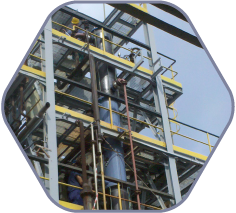
Hydrochloric acid
Synthesis, distillation, etc

Graphec® OneButton system for Hydrochloric Acid
Ecarb’s experts own a specific process engineering know how for Hydrochloric Acid, enhanced by decades of practice on field. Our competences in material science and process equipment design are the basis for Graphec® systems for synthesis, absorption, separation and purification of Hydrochloric Acid. Graphec® packages are studied and designed to maximize safety, in order to combine the highest reliability, with lower operation costs and the minimum investment. “OneButton” logo underlines the special care to simplify operation and maintenance management.
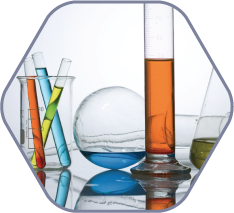
Water treatment
PAC and ferric chloride

Graphec® OneButton system for PAC and Ferric Chloride
We design and manufacture turn-key solutions for PAC and Ferric Chloride, used as inorganic additives for water treatment, on the basis of many years of experience on field. Our design combines the highest reliability with lower operation costs and the minimum investment. Compared to older units, we provide heat recovery systems, to get the highest energetic efficiency, in the respect of environment. “OneButton” logo is the guarantee that each detail has been studied to maximize safety and to simplify operation and maintenance management.
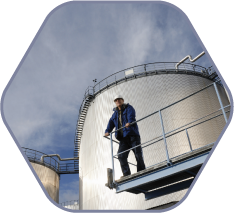
Sulphuric acid
Dilution and Concentration

Graphec® OneButton system for Sulphuric Acid
Ecarb’s experts own a specific process engineering know how for Sulfuric Acid, enhanced by decades of specific on field. Our competences in material science and process equipment design are the basis for Graphec® systems for dilution and concentration of Sulfuric Acid. Graphec® packages are studied and designed to maximize safety, in order to combine the highest reliability, with lower operation costs and the minimum investment. “OneButton” logo underlines the special care to simplify operation and maintenance management. Full operational control is aimed to minimize the risk of human error.
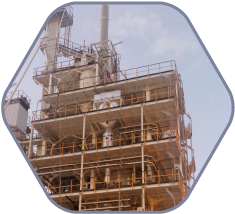
Acid gas treatment
Scrubbers, quenching & recovery units

Graphec® OneButton systems for flue gases
We design and manufacture turn-key solution for acid waste gas treatment on the basis of many years of experience on field. Our technical solutions combine the highest reliability with lower operation costs and the minimum investment. Compared to alternative units, we implement the recovery of the maximum allowed acid content (HCl, HF etc), up to commercial grades, and we can add an energy saving systems which allows tangible advantages, in terms of environmental compliance and minimization of management costs. “OneButton” logo is the guarantee that each detail has been studied to maximize safety and to simplify operation and maintenance management.
Graphec® ST, graphite shell&tubes heat exchangers

Graphec® ST shell&tubes heat exchangers are extremely safe and strong. The tubes – exclusively made in Europe - are homologated according to AD-2000 N2 with grade G 30-00-220, the best in the market. The tube-sheetsts may be made of fine-grained graphite (Graphec® iSP) or ultra-fine grained graphite (Graphec® ILP), based on the requirements of each item. The joints between tubes and tube sheets are performed according to a gasket-less certified procedure. Tubes and tube-sheets can be reinforced with carbon fiber wrapping, Graphec® CFx, to increase resistance to mechanical and thermal stresses (in particular, the fatigue resistance).
The coupling between floating header, floating tube-sheetst and shell is designed with a double tightening system, in order to manage separately two indipendent functions: gaskets tightening and differential expansion compensation (with helical springs). Therefore, even in case of failure of springs, this system avoids leakages of corrosive fluid to the outside. Every single detail is designed to make Graphec ST robust and reliable, even in extreme conditions.
Each unit can develop up to 1600 m2 exchange surface and it is possible to integrate more bundles into a single unit (ST Multibundle), which works under optimal conditions of heat exchange and fluid velocity. Headers and shell can be made of a endless combination of materials and coatings. A long list of accessories (inpingement plate, anti-erosion, overflow crowns, ...) makes Graphec ST suitable for the most challenging and complicated services.
Gallery ↓






Graphec® RB and SB, graphite block heat exchangers

Great ease of maintenance and operation, compactness and versatility: these are the characteristics of graphite blocks heat exchangers, mainly used as condenser or as heaters in pickling lines.
Ecarb has two models of such a kind of unit: Graphec® RB (cylindrical blocks) and Graphec® SB (prismatic blocks). Blocks are available in materials Graphec® iSP (fine-grained, max 200 ° C), Graphec® ILP (ultra-fine grit, max 220 ° C) or Graphec xLP (with special impregnation, up to 430 ° C).
Diameter and type of holes, drilling path, number of blocks and passes are parameters optimised on the basis of specific process conditions. Accurate design and faultless construction ensures a longer lifetime. Each unit can develop up to 900 m2 of exchange surface. Headers and shell can be made in a endless combination of materials and coatings. A long list of accessories (inpingement plate, blocks sacrifice anti-erosion, overflow crowns, ...) make Graphec® RB and Graphec® SB suitable for every specific service.
Gallery ↓






Graphite columns

The graphite, because of its excellent corrosion resistance and the great thermal stability, allows severe operating conditions, often unsustainable for other materials or coatings.
Graphec® columns, packed or plates, are manufactured according to specifications of every single project. Available construction materials are graphite grades Graphec® iSP (max 200 ° C), Graphec® ILP (max 220 ° C) and Graphec® XLP (up to 430 ° C). Every detail is designed according to the most advanced engineering standards in order to maximize lifetime and to get easy and quick maintenance. Graphite columns can have large diameters (up to 2400 mm). Graphite can be reinforced with external carbon fiber wrapping, Graphec® CFx, in order to increase the resistance and intrinsic safety in the case of unforeseen and hazardous operating conditions. The graphite can also be armored with an external shell made of carbon steel.
Graphec® product line includes a full range of graphite internals:
Gallery ↓



Graphec® quenchers

Graphec® quenchers ensure rapid cooling of hot gases (up to 1800 ° C), by sudden evaporation of a liquid.
TAvailable construction materials are graphite grades Graphec® iSP (fine grain) or Graphec® ILP (ultra-fine grain). Graphec® quenchers may have also large diameter (up to 2400 mm). They can be reinforced with external carbon fiber wrapping, Graphec® CFx, in order to increase the resistance and make them safer in the case of unforeseen and hazardous operating conditions.
Depending on the characteristics of treated fumes, Ecarb produces three models of Graphec® quenchers:
Each geometry better suits to certain process conditions, such as the presence of particulates, the need to keep under control pressure drop or the variability of the feed flow rate. Every detail is designed to increase the lifetime of the equipment and to ensure an uniform distribution of the liquid, even under abnormal conditions.
Gallery ↓



Spares, rupture disks and accessories

Spare parts
Cylindrical and cubic blocks, nozzles, hoses, fittings, gaskets, headers: every component of your graphite unit is perfectly replicated using high-quality materials, thanks to reverse engineering techniques. Ecarb does not charge the price of spare parts, as manufacturer of original equipment do. This price policy allows a considerable savings on maintenance costs.
Accessories and bursting disks
Graphec® product line includes the following graphite components and accessories:
Gallery ↓






PTFE lined equipment

PTFE protects against most aggressive fluids in a wide range of operating conditions. The design of our equipment is made according to specific construction standards of the selected lining technique. The metallic parts are designed and manufactured to get a precise and uniform application of the liner.
High-density sheet lining
Columns and vessels, even of large diameter, are lined with sheets made of virgin PTFE. The sheets are skived from sintered high-density massive rods, having lower permeability in comparison to extruded or pressed PTFE. Sheets are applied in adherence to the inner surface. Continuity of the coating is guaranteed by weldings, finally checked with spark test.
Roto-lining
The application in rotary kiln of 3-5 mm of ETFE or Teflon lining allows the creation of seamless layer, perfectly resistant to full vacuum up to high temperature. It is an advanced technology that eliminates many of the critical problems originated by other coating techniques. It is available for diameters up to 2200 mm.
Dual protection system
Dual protection system is technique developed and experimented by Ecarb for critical services. To eliminate the risk of corrosion due to slow permeation after years of operation, metallic surface is protected by a second layer: a coating (approx 1 mm) typically made of ECTFE or PFA. The interspace between two liners is kept under aspiration to purge fluids eventually permeated or to ensure safe operation under vacuum conditions.
Gallery ↓



PVDF, ECTFE, ETFE and PFA coatings

The application of fluorine-polymeric coating of thickness up to 1 mm is a protection technique alternative to heavier PTFE lining. The design of our equipment is made according to specific construction standards of each material. The metallic parts are designed and manufactured to obtain a uniform and precise coating.
Available materials:
These polymers are sprayed and baked in ovens, ensuring perfect adherence to the inner surface of metallic shell. The first layer is applied after the proper sandblasting procedure and it provides high adhesion of the coating, necessary to enable resistance to vacuum and high temperature. The next layers are intended to retard the permeation, along the multilayer structure.
The main characteristics of the fluorine-polymer coating are:
Gallery ↓



Rubber and ebonite

Ecarb manufactures rubber or ebonite lined equipments, using European high quality rubber and ebonite, resistant to a wide range of chemicals. Our items are designed according to standards, specific for each material. Metallic parts are designed and produced to ensure a homogeneous adherence and perfect sealing.
Available Materials:
These polymers are applied to inner surface of metallic equipment, in temperature controlled autoclaves, after an appropriate sand-blasting process, according DIN and EN norms. It is possible also to overlap several layers, made of different materials. Due to the perfect adhesion of lining to the metal, rubber lining is ideal for full vacuum operation.
Main features of our linings are:
Gallery ↓



PP, PVC e PVFD process equipment

Ecarb designs and manufactures vessels and equipment made of plastic or FRP. Mechanical calculation and manufacturing is carried out in compliance with most reliable international standards; in particular FRP equipment are designed in accordance to BS 4994, the most safe and complete reference norm.
Our product portfolio includes:
On the basis of process fluid and working conditions, Ecarb will advise the choice of the best material and we will help to identify the suitable manufacturing standards.
Gallery ↓



Piping PTFE

PTFE Piping & fitting
A complete range of PTFE lined pipes and fittings, made of lined carbon steel or stainless steel, according to international standards UNI, DIN (DIN2848) and ANSI. Lining is produced from virgin PTFE, using the most suitable manufacturing technique: PTFE can be extruded, molded or rotolined. Fittings and Tees are available with PTFE or PFA lining, depending on the application. Heavy duty piping, with diameter up to DN600, can handle high vacuum grades. The lining can be charged with graphite (conductive), when it is required by ATEX. On request, several accessories can be choosen: earthing lugs, customized painting, steel reinforcement, etc.
Expansion Joints
Our product range includes expansion joints with 2, 3 and 5 convolutes, made of white or black (antistatic) PTFE, with outer stainless steel rings to ensure safety and long lifetime. In case vacuum resistance is needed, our bellows may be equipped with PTFE lined inner ring. Flanges can be painted, according our special painting system, or galvanized. Graphec® expansion joints are studied to be specifically used on graphite nozzles.
Manifold
Due to safety reasons or lack of room, standard fitting cannot allow installation of flanged pipeline. In such a case, flangeless customized manifold will be designed and created.
Gallery ↓



Metallic shell&tubes heat exchangers

Ecarb designs and manufactures shell & tubes heat exchangers, according to each project specification. Our units are ideal for chemical, pharmaceutical, petrochemical and oil & gas industries. Every detail is adapted to specific process service (reboiler, condenser, heater / cooler) or to requested geometry (Kettle evaporator, bayonet, etc.)
Available materials:
Ecarb’s manufacturing system is certified according to European Pressure Equipment Directive PED (97/23/EG). We autonomously manage the design and the certification in compliance with main international standards (ASME, AD-2000, VSR and EN) and according to TEMA construction standards.
In order to get corrosion protection for specific applications (i.e. cooling of sulphuric acid), an anodic protection system can be installed in our shell & tube exchangers. Protective film is formed on the surface of metallic shell, by mean of an electronic controlled tension. Ecarb is able to design heat exchangers with embedded anodic protection device and to set up and start up the electronic protection control system.
Gallery ↓



Columns, vessels and reactors

Ecarb designs and manufactures reactors, columns and vessels for chemical, pharmaceutical, petrochemical and oil & gas industries, according to each project specification. Every detail is adapted to the requested process service, on the basis of the geometry of the equipment: stirred reactors, tubular reactors, reflux vessel, flash drum, storage tanks, distillation columns (with packing or plates), falling film absorber, etc.
Available materials:
Ecarb’s manufacturing system is certified according to European Pressure Equipment Directive PED (97/23/EG) so to autonomously manage the design and the certification in compliance with main international standards (ASME, AD-2000, VSR and EN). The knowledge of the chemical process operating principles allow to ours engineers to take maximum care of every detail, in order to adapt each item to its working conditions. We will propose and include all suitable accessories and components that increase safety, lifetime and reliability.
Gallery ↓



Plates heat exchangers

A complete range of equipment, suitable to meet customer specific needs. Ecarb assemblies plates heat exchangers, welded or with gaskets. Thanks to the wide availability of dimensions, gasket materials and frames, we will select the cheapest and smartest solution for each application.
Plates and gaskets heat exchangers are equipped with self-gripping gaskets (Nitrile, EPDM, Viton and NBRHT), providing a maximum operating temperature of 160 °C. Each plate has an heat transfer area from 0,1 to 3,5 m2, thickness from 0,35 to 0,8 mm, connection up to DN500 (20"). Free flow plate system (with higher gap between plates) is available in case of dirty fluids.
Welded plates heat exchangers are capable to work under severe and challenging process conditions, they can work under high pressure and temperature, they can handle dirty fluids or they can work as condenser, under vacuum. It is possible to choice between two different geometries, with rectangular section or with circular section, with several plate types: dimped, corrugated or embossed. The plates are easily accessible to simplify cleaning operation or to enable processing of fluids rich of solids
Available materials:
Gallery ↓



Silicon carbide Super-SIC® heat exchangers

SUPER-SIC® heat exchangers have a unique design with silicon carbide (SiC) tubes and massive SiC tube-sheets. They are designed to operate under severe and corrosive conditions, being SiC universally inert. Other suppliers propose tube-sheets made of PTFE or glass lined steel, which will lead to leakages even after short operation periods.Leakages can be due to deformation of the lining, to permeation of corrosion media up to the metallic substrate or to loss of elasticity of the sealing system, during thermal cycles. Our massive SiC tube-sheets is the unique and final solution of these problems, due to usage of hard, resistant and eternal material.
Main features of SUPER-SIC® units:
Double tube-sheet
It is possible to segregate the process fluid and the service fluid with a separation chamber. In case of failure of O-rings sealing, no mix will occur between the two fluids (according to GNP criterium). Separation chamber can be eventually pressurized to avoid any leakage towards the external. Primary tube-sheet, in contact with process fluid, is always made of massive SiC.
Sealing system
Each tube end is connected to the primary and secondary tube-sheet, with two pairs of FKM o-rings. Double o-ring avoids loss of elastic properties of the whole system. Moreover double O-rings set will softly support SiC tubes, to prevent from shocks or vibrations.
Gallery ↓



Glass lined vessels

When glass marries the steel
In cooperation with selected Italian partner, Ecarb designs and manufactures glass lined process unit for chemical and pharmaceutical industries, according to customer’s process specification. Any detail is studied and designed for the specific application and it is optimised on the basis of the geometry of the equipment: reactors, vessels or columns. Reactors are available coording to DIN standards, with full set of certifications.
Safe mechanical calculation, optimal definition of glass lining process in controlled temperature ovens and accurate selection of glass powder blend: every step of the manufacturing process is performed to ensure the perfect execution.Each item is double checked: metallic shell is tested before glass-lining (X-ray, hydraulic test) and a full set of tests is carried out at the end of lining process, according to reference standards. Spark test is always performed to ensure constant lining thickness. Our sealing system foresee the use of three layers envelope gaskets or Gore® gaskets, specific for enameled steel, together with certified clamps.
Gallery ↓



Graphec® PTFE expansion joints

Expansion joints have an important function in preventing excessive stresses, caused by thermal expansion, improper loads or vibrations. These solicitations may damage nozzles or entire pipelines. Being chemically inert, PTFE is the ideal construction material for bellows, to be installed on graphite nozzles of Graphec® units, used for corrosive fluids. Graphec® PTFE compensators are designed to be installed - without modification - on graphite nozzles of our equipment.
PTFE Graphec® expansion joints are available in
The quality of raw materials and the construction techniques allow to obtain high pressure rating, even for large diameters and high temperature. Upon request, our sales service will provide technical and commercial data sheets, with typical gauges of each diameter.
Gallery ↓



Graphec® safety bursting disks

Graphec® safety disks ensure safe, reliable and precise rupture behavior, protecting your equipment from unpredictable pressure fluctuations. Compared with metallic ones, graphite safety disks guarantee following advantages:
Graphec® product line includes three disk models, to face several working conditions (temperature and pressure).
All three models are available from DN25 up to DN 600 (1” to 24”), are suitable for UNI or ANSI flanges and certificated according to PED. On request is possible to have finest calibration, up to +/- 5%.
We can provide disks interchangeable with those of main manufacturers, with bursting pressure from 0,1 bar and vacuum resistant.
Gallery ↓



“OneButton” HCl Synthesis Unit

Commercial HCl solution are produced by absorption of hot HCl gas, which is sinthetized by combustion of H2 and Cl2. "One button" units are available as skid mounted package, "turn key", fully equipped and ready for operating. Our synthesis unit has the burner placed at bottom of the furnace and this design offers great advantages:
Gallery ↓



HCl distillation plant

Graphec® OneButton systems offer taylor-made solutions for Hydrochloric Acid distillation. Premium systems which ensure the minimum investment cost thanks to internal production of critical items.
Pressure swing iper-azeotropic distillation: two distillation stages working at different pressure (one under vacuum conditions, the other with high pressure) allow to distillate Hydrocloridric Acid over azeotropic concentration (~20% at atmospheric pressure), exploiting the change of azeotropic concentration with pressure.
Extractive distillation of HCl with Sulfuric Acid. In order to exceed azeotropic concentration, it is possible to use the great hygroscopic properties of Sulfuric Acid, which dehydrates diluted Hydrocloridric Acid, inside an extracting column. A second column recovers spent aulfuric acid, to recirculate it to extractino column. This recycle reduces drastically acid consumption. Each stage of the process needs an accurate material selection, in order to guarantee longer operating life of equipment.
Azeotropic distillation (purification): azeotropic solutions of HCl are evaporated and condensate in single or double stage evaporator, to remove traces of metallic ions (Fe,Zn,Pb,….) or other heavy compounds.
Gallery ↓



HCl purification and stripping

"OneButton" process packages offer tailor-made solutions for stripping and purification of Hydrochloric Acid. Premium systems are possible with very low investment cost, thanks to internal production of most of the critical items.
Azeotropic Distillation (purification): azeotropic solutions of HCl are evaporated and condensate in single or double stage evaporator, to remove traces of metallic ions (Fe,Zn,Pb,….) or other heavy compounds.
HCl stripping: the elimination of low-boiling organic fractions in performed into desorption / absorption sections, that enable to purify, recover HCl and concentrate to get the requested commercial grades.
Gallery ↓



Absorption units

“OneButton” HCl absorption units offer specific solutions for quenching, absorption and recovery of hydrocloric Acid.
HCL absorption and recovery unit. By treating gases with high HCl content, it is possible to recover high quantities of acid at a commercial grade (concentration up to 37%) and high purity. HCl absorption generate heat, which must be continuously removed. Gases may be treated into adiabatic absorption columns, often equipped with external heat exchanger, or into isothermal falling film absorber. When feed gas are hot, a quencer must be installed at the package inlet (visit Graphec® quenchers web page for further details).
Hot gases quenching. From industrial or civil waste combustion process, hot spent gases (up to 1800 °C) with high content acids (HCl, H2SO4) are suddenly cooled in graphite adiabatic quencher, by means of evaporation of quenching solution (visit Graphec® quenchers web page for further details). Saturated gas is then condensed and absorbed in process sections designed to obtain desired acid concentration, on the basis of project specifications.
Hydrochloric acid scrubbers. Scrubbers are necessary to avoid HCl emission, due to its high volatility. Visit "One-button scrubbers" web page for further details.
Gallery ↓



HCl Scrubbers

"OneButton" scrubbers are specifically designed for HCl containing gas treatment. Our systems are fully automatic, PLC controlled, and their premium quality and technology are combined with the minimum investment cost. Main items are produced internally.
Scrubbers are used to avoid any emission of pollutants into atmosphere. Due to its high volatility, HCl can be released from undesired vent points onto storage tanks or from process equipment.
In order to reduce emissions under permitted limits, it is possible to use single stage or multistage scrubbers. The liquid, typically water or caustic soda solution, captures the acid gas by absorbing it into absorption columns (scrubbers). Multi-stage scrubbers are usually chosen when HCl is relatively concentrated into vent gas. First stage often needs an heat exchanger beside to the washing column, to remove absorption heat. In case of double stage scrubber, weak acid from first stage can be recovered.
Scrubbers are plastic (PP or PVC-FRP) or graphite columns and they are are equipped with a demister to avoid aerosol emission. To ensure water and caustic soda continuous make up, control system foreseen level sensors, PH and / or redox detectors. Columns, pumps, heat exchangers and instrumentation are selected to ensure longer operating life and lower investment costs.
Gallery ↓



High purity ferric chloride solution

Ferric Chloride is an inorganic additive used in sewage treatment and drinking water production. Graphec® OneButton systems allow production of high purity ferric chloride by mixing and reacting of hydrochloric acid and iron oxide powder.
Our packages are turn-key units, complete of intermediate storage vessels, powder handling device, reaction and filtration sections. If not available on site, utilities are integrated in the package. Commissioning and start-up assistance can be provided in order to train operators to manage the unit and to minimize downtime.
Our graphite heat exchangers are integrated into the system to allow almost complete heat recovery, so to almost eliminate energy costs for hot water and cooling tower. Complete thermal recovery leads to many advantages such as: lower operating costs (competitiveness against traditional system), low environmental impact and lower investment cost for utilities.
Gallery ↓



Ferric chlorides from pickling solution recover

Spent pickling bathes are not a waste to be expensively disposed, but a renewable resource to produce a valuable product. Ferric Chloride is an inorganic additive used in sewage treatment and drinking water production. Graphec® OneButton systems allow production of ferric chloride (with basic purity) starting from exhaust pickling solutions.
Our packages are turn-key units, complete of intermediate storage vessels, oil removing section, reaction section, concentration unit and scrubber. If not available on site, utilities are integrated in our package. Commissioning and start-up assistance can be provided in order to show system features and to train operators to manage the unit and minimize downtime.
Exhaust pickling solution can be completely re-used thanks our systems. Pickling solutions are purified from organic content (oil and grease) and they are treated into reactors by oxidation of ferrous chloride to ferric chloride. Intermediate ferric chloride weak solution is concentrated into a double stage evaporator. Heat saving devices are implemented in the system to minimize steam and reactants consumption.
Gallery ↓



PAC, Poly - Aluminium Chloride

PAC is a precius additive used into sewage treatment, drinking water production and body care products. Due to high aluminium content, high capacity to coagulate and its low specific consumption, PAC is the most efficient organic additive available on the market.
Graphec® OneButton systems allow production of high purity and high basicity PAC by mixing and reacting aluminium hydroxide and hydrochloric acid.
Our packages are turn key units, complete of intermediate storage vessels, powder handling system, reaction and filtration unit. If not available on site, utilities are integrated into our package. Commissioning and start-up assistance can be provided in order to train operators to manage the unit and minimize downtime.Each item is designed and studied to overcome any erosion or corrosion problem and according to specific safety standards for PAC. Enameled reactors are designed with special thickness, graphite heat exchangers are equipped with anti – erosion device: every component is designed to increase efficiency and to decrease batch time, to get the optimum balance between investment cost and economical performance.
Gallery ↓



Sulfuric acid dilution systems

Graphec® "OneButton" Sulfuric acid dilution units are skid mounted turn-key systems completely automatic. Acid dilution produces a sudden and relevant heat release, which causes quick temperature increase, sometimes over the evaporation temperature of diluted acid.
Graphec® OneButton normally include heat exchanger (usually graphite Shell and Tubes), static mixer (made of graphite / PTFE), acid resistant piping and valves (PTFE lined), conductivity measurement device, metallic frame, instruments, control valves and control panel (with PLC). If needed, following accessories can be integrated: feed pumps or product booster, automate unit to control delivery to storage tanks, cooling tower, DCS interface control and recording station.
Graphec® OneButton ensures:
Integrated control system is eventually equipped with recorder and it is able to regulates interlocks and sequences. No manual operation is needed with “OneButton” logic, workers must only select required concentration value, press START button and wait few second to reach steady state.
Gallery ↓



PAC – Polialluminiocloruro

Il PAC è un additivo pregiato, utilizzato nel trattamento delle acque reflue, nella potabilizzazione delle acque e in prodotti per la cura del corpo. Per tenore di Al, alto potere coagulante e costo complessivo, è l’additivo inorganico più efficace disponibile sul mercato. Gli impianti Graphec® OneButton consentono la produzione di soluzioni commerciali PAC (a elevatissima purezza e alta basicità) a partire allumina idrata e acido cloridrico.
I nostri impianti sono forniti chiavi in mano, completi delle sezioni di stoccaggio, movimentazione solidi, reazione e filtrazione. Le utilities, laddove non disponibili, sono integrate nel package. Un servizio di assistenza allo start up vi consentirà di familiarizzare con il processo in modo da assicurare da subito piena capacità produttiva ed autonomia gestionale.
Ogni item è progettato in base a specifiche studiate per far fronte ai problemi di erosione, corrosione e sicurezza tipici degli impianti PAC. Dai reattori vetrificati, con spessori maggiorati, fino agli scambiatori in grafite minuti di dispositivi anti-erosione: tutto è studiato per aumentare la resa, diminuire i tempi di batch ed esercire l’impianto in sicurezza ed economia.
Gallery ↓



Graphec® graphite internals for mass transfer

Graphite internals are the ideal complement of graphite and PTFE lined columns. On the basis of a long process competences and experience, our engineers are able to perform accurate selection of the suitable internals for each process unit, from distillation column to falling film absorber.
Graphec® column internals show significant advantages, when compared to plastic internals (PTFE) or metallic internals:
Graphec® internals product line includes:
Gallery ↓



Sulfuric Acid concentration

"OneButton" process packages offer tailor-made solutions for Sulfuric Acid concentration. Premium systems are possible with very low investment cost, thanks to internal production of most of the critical items.
Depending on acid feed and the desired final acid grade, the concentration can be performed into one or two evaporation stages, working at different pressures, or in a single distillation column. Our packages are provided with every device useful to reduce the consumption of energy and to ensure simplicity and cost-saving.
The different process devices require a careful material selection, in order to ensure long useful life for each component. Graphite, PTFE, tantalum, Hastelloy: sulfuric acid concentration units require perfect awareness of corrosion mechanism and the detailed knowledge of the most suitable materials for each condition of use.
Gallery ↓



SERVICE
Availability and customer care: these are our values. Our fitters and technicians own an unique mix of practical skills and specific know-how to repair and recover graphite process equipment, even when it seems to be almost impossible. We are available for urgent and quick repair on site all over the world, when plant downtime does not allow maintenance in Ecarb's workshop. We offer a wide range of service solution, including innovative and taylor-made formulas: we are always ready to make your life more confortable.
Shooting at your troubles is our highest mission.
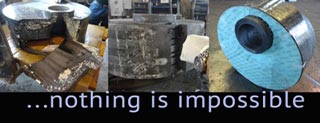
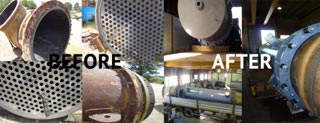
PRODUCTION SITE
ECARB S.r.l
Via Flaminia Ternana 500
05035 Narni TR
tel. 0744 744520
fax 0744 762014
VAT Number IT01434510556
CONTACT US
Ecarb Srl is a manufacturer of premium equipment for the process industry. Founded on the initiative of a group of entrepreneurs and professionals with a long and valuable experience, Ecarb is rapidly growing in the global market, thanks to the best available combination of price and value. We offer to our customers an expertise, backed up by a genuine passion for our work. Ecarb combines tradition and innovation: our workers have a unique mix of technical knowledge and craftsmanship that makes them among the most experienced in the world. High-quality material procurement, the best manufacturing practices and selected partnerships: we have everything to provide a smart and convenient alternative.

ECARB S.r.l.
PRODUCTION SITE
Via Flaminia Ternana 500
05035 Narni TR
tel. 0744 744520
fax 0744 762014
SALES OFFICE
Via Giuseppe Ripamonti, 129
20141 Milano
tel:+39 02 49526470
fax:+39 02 49526471




